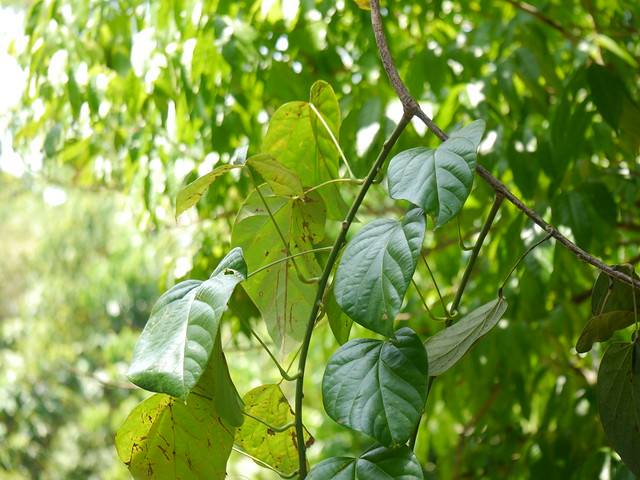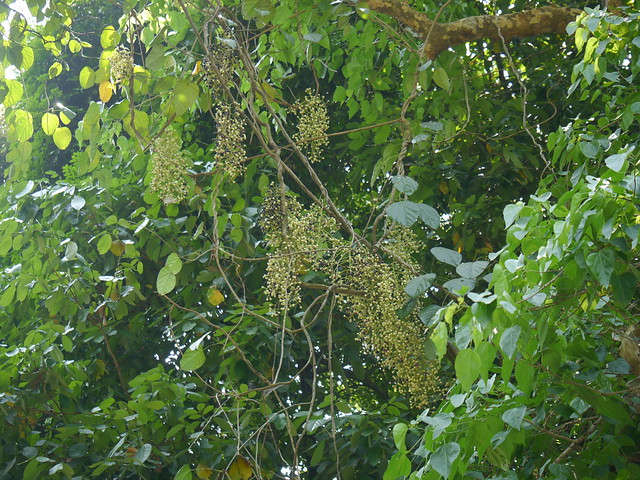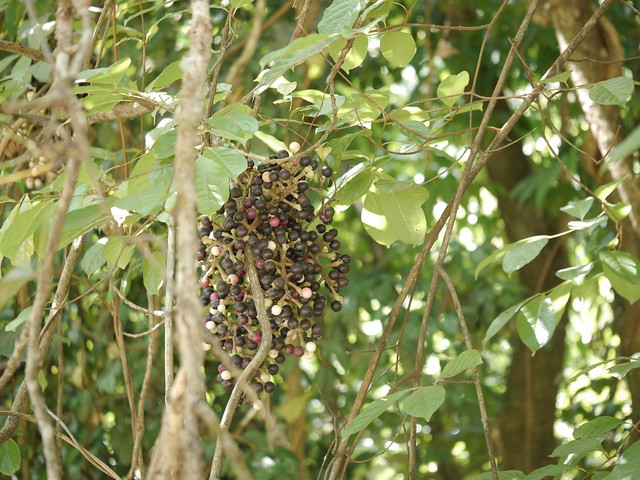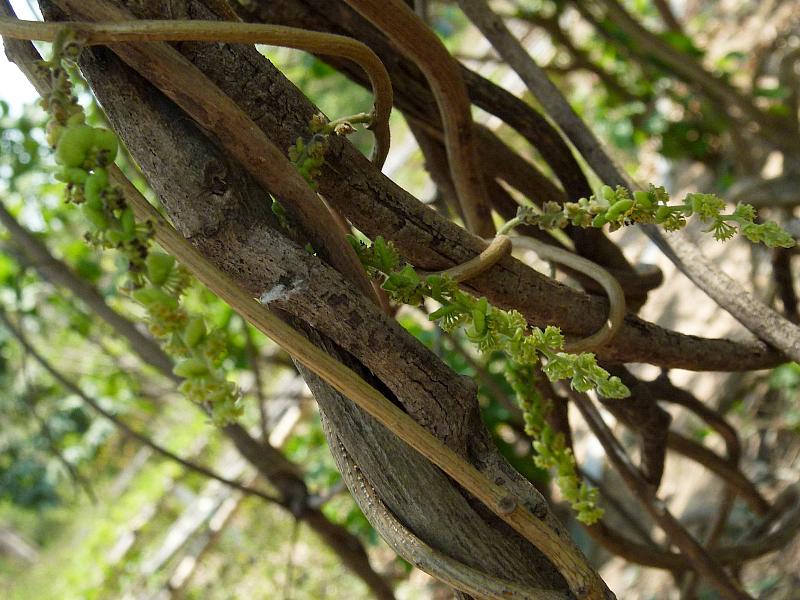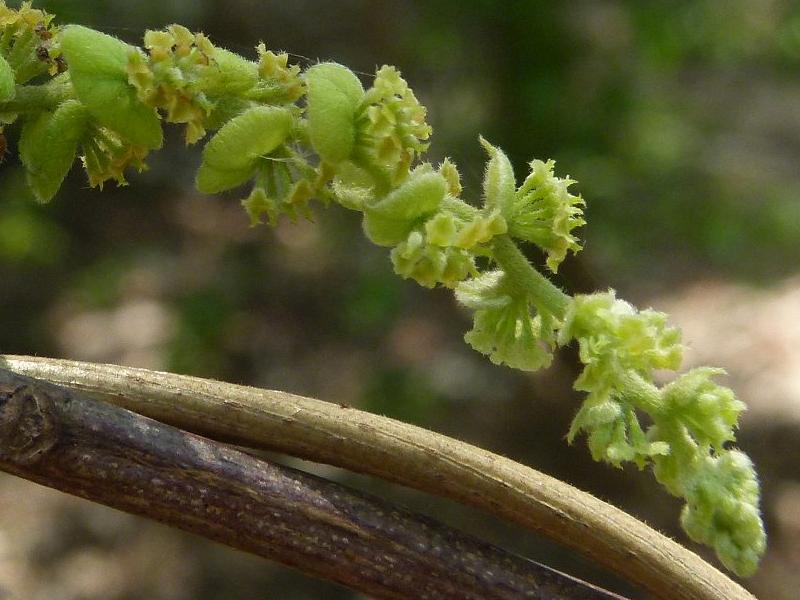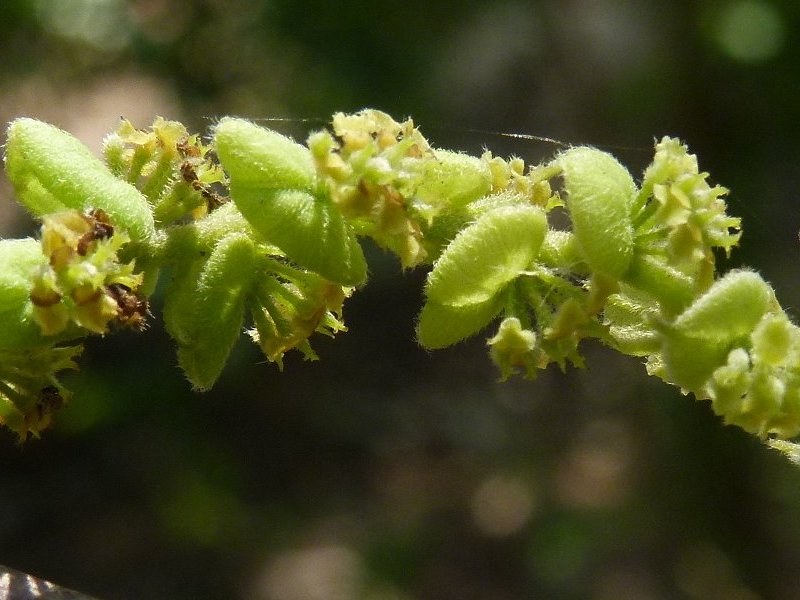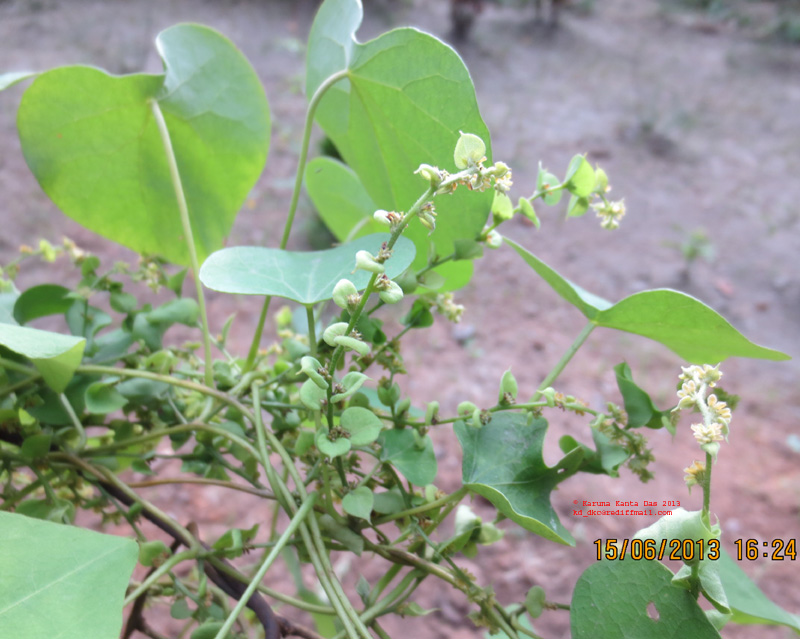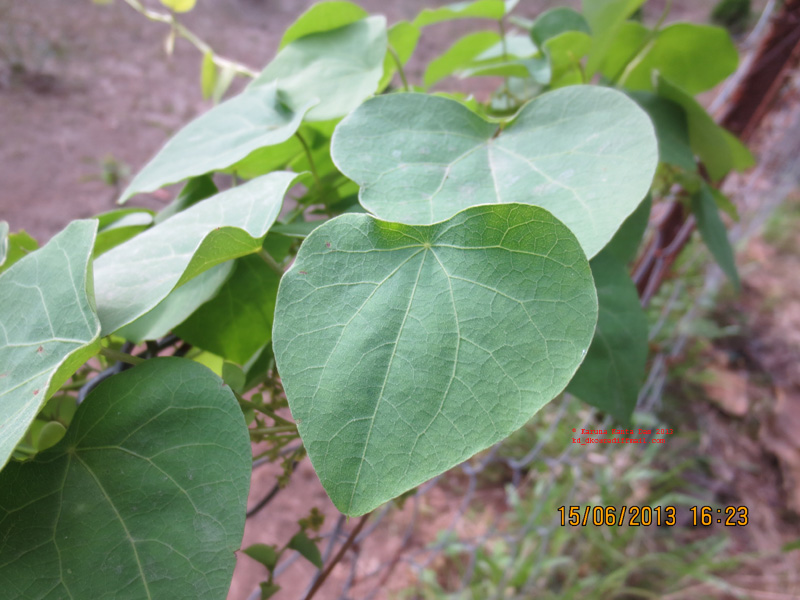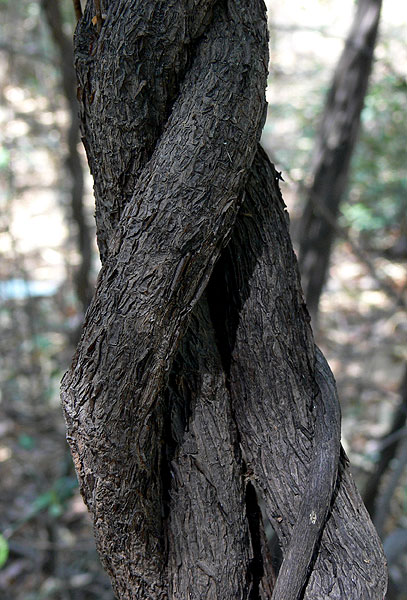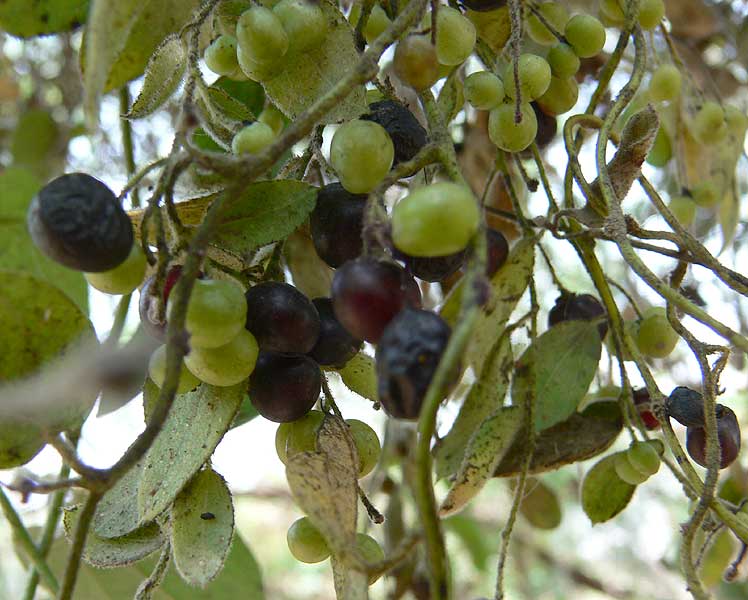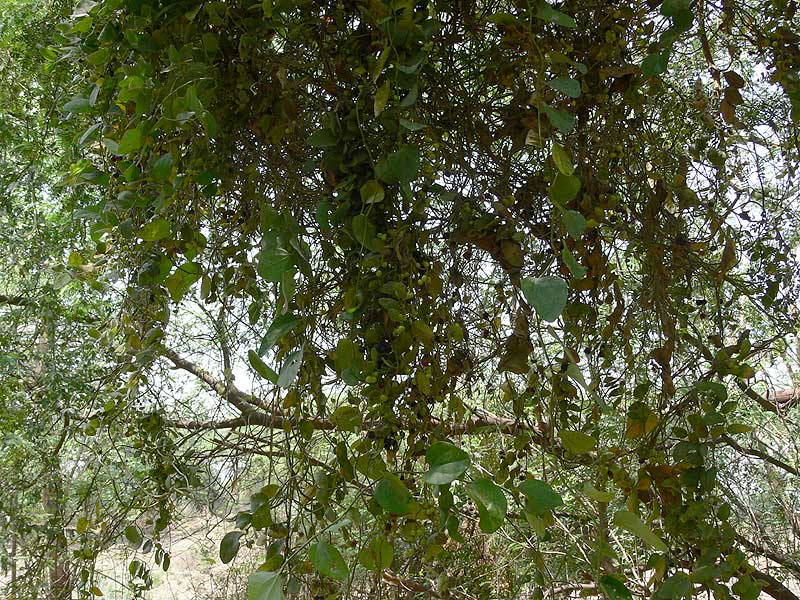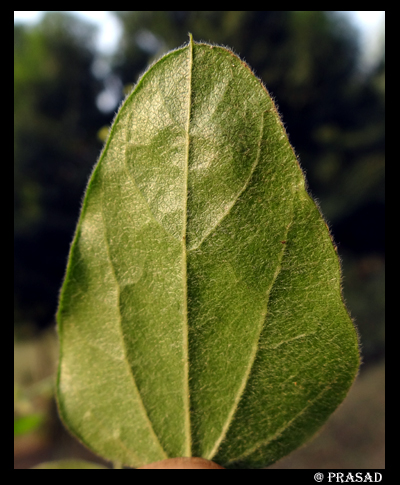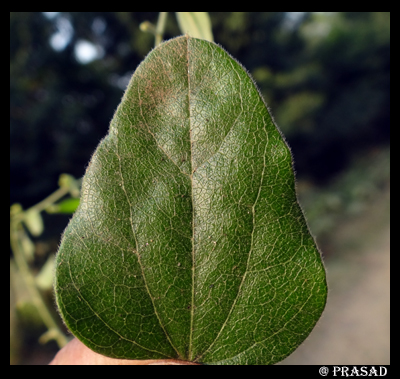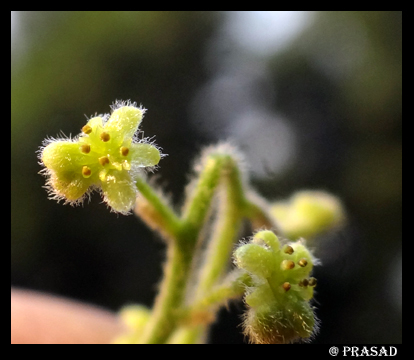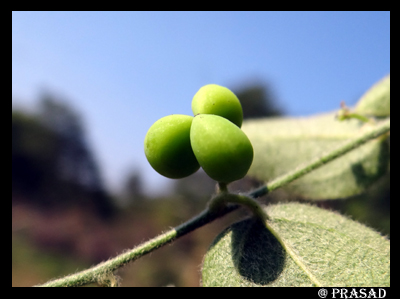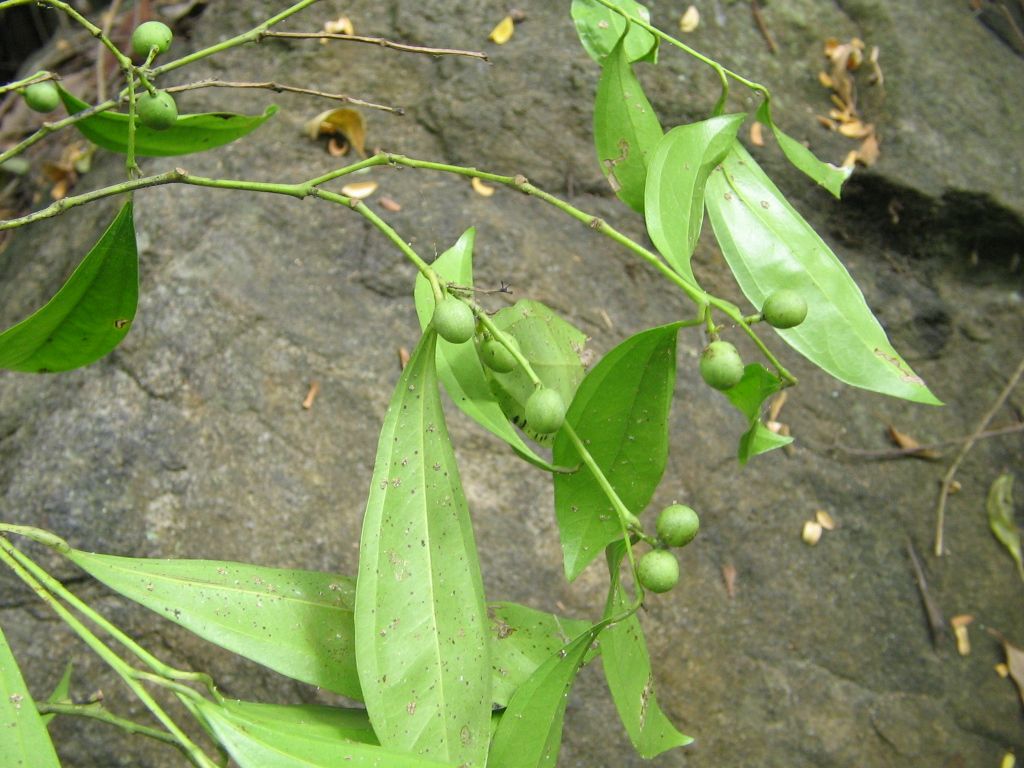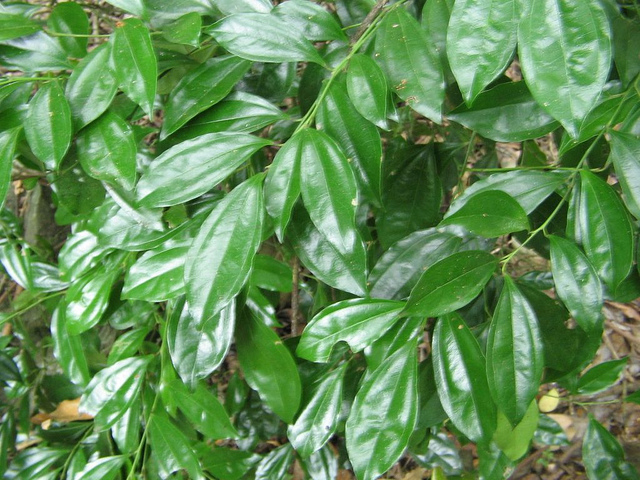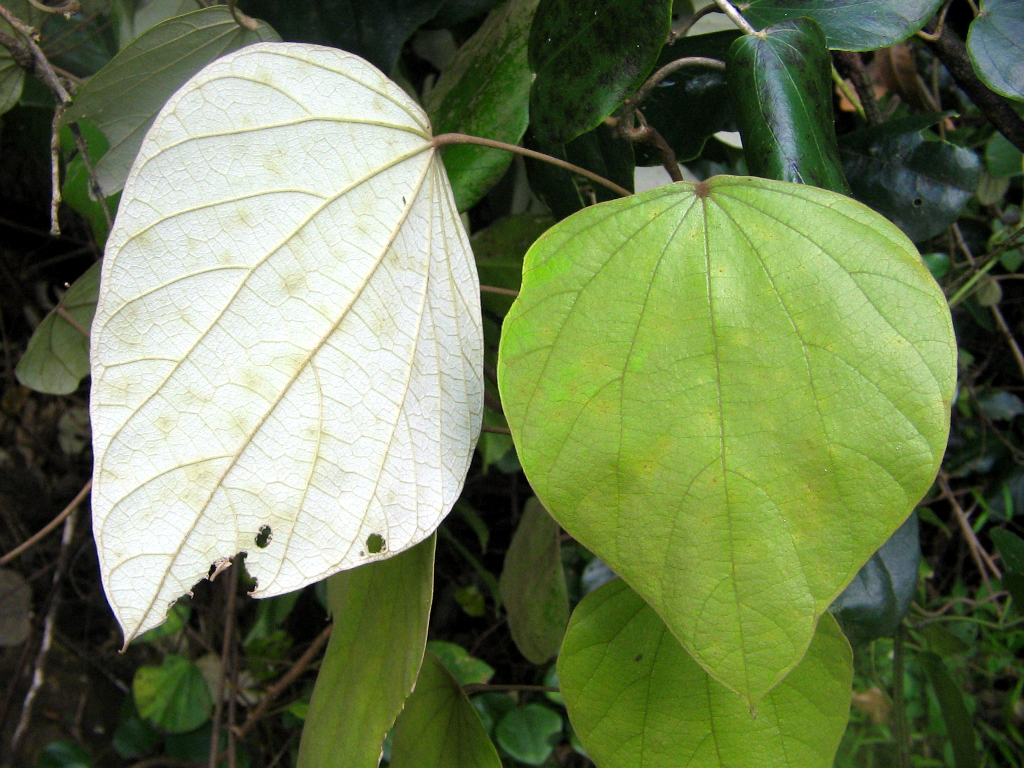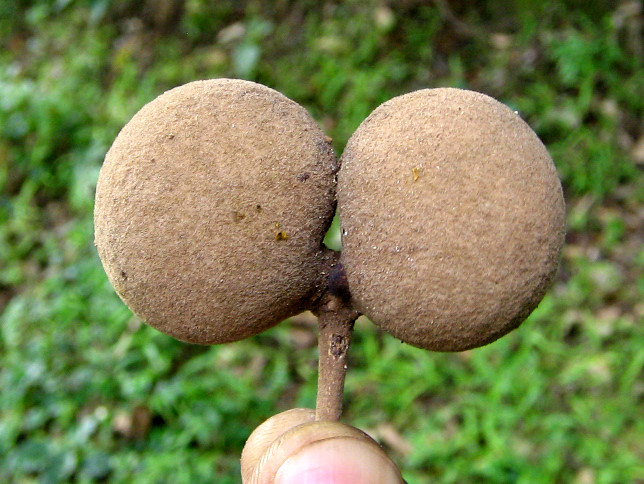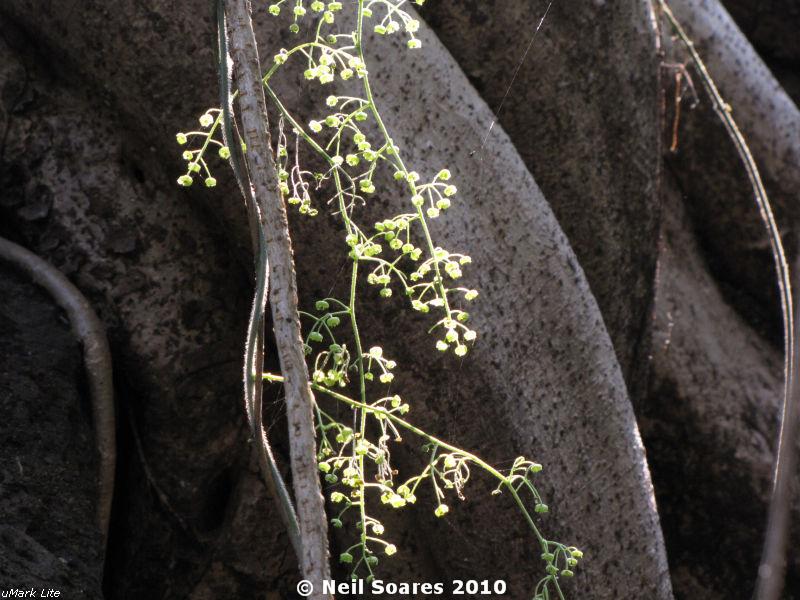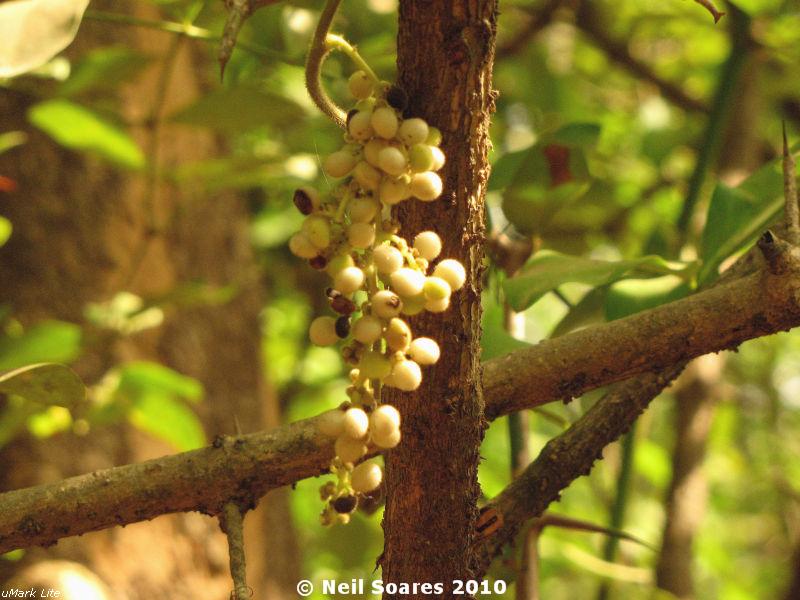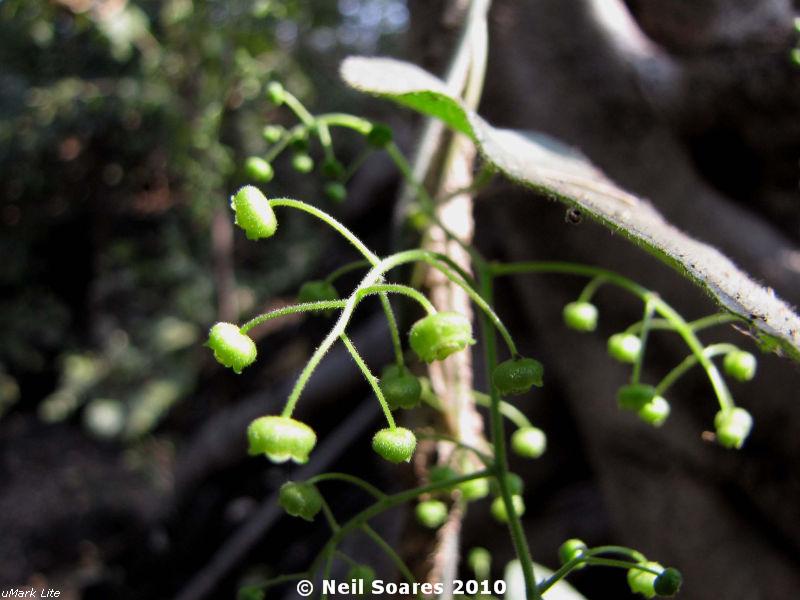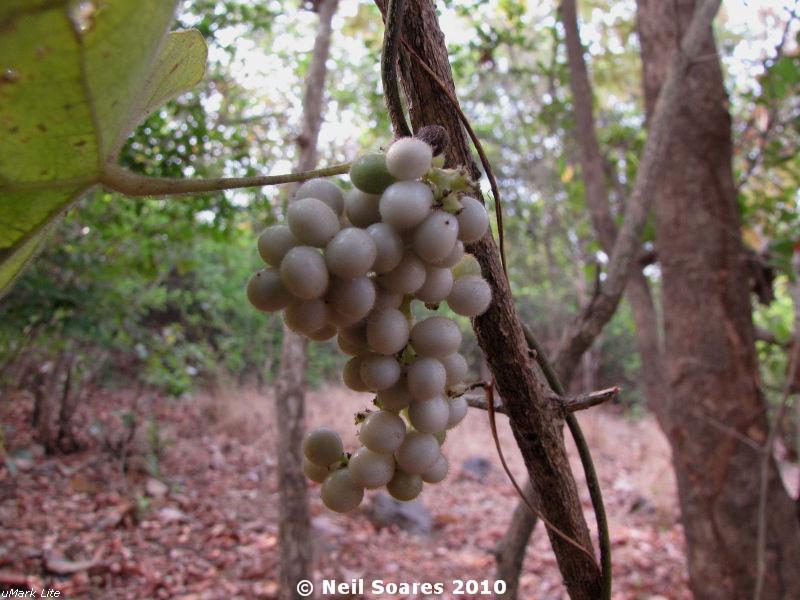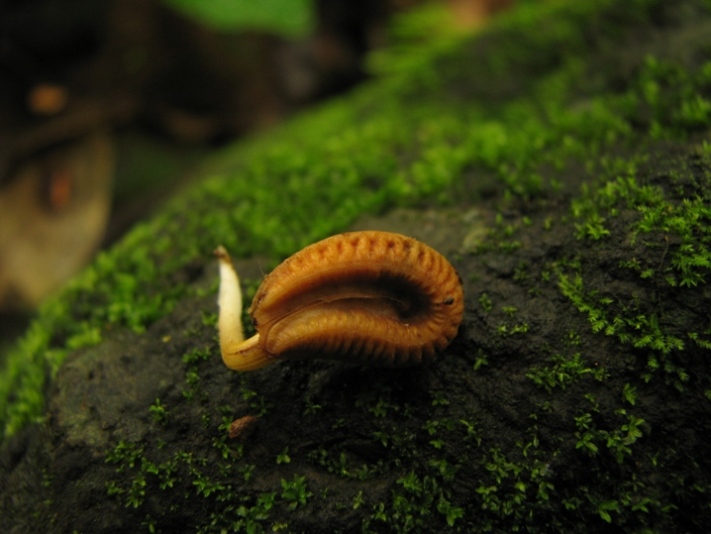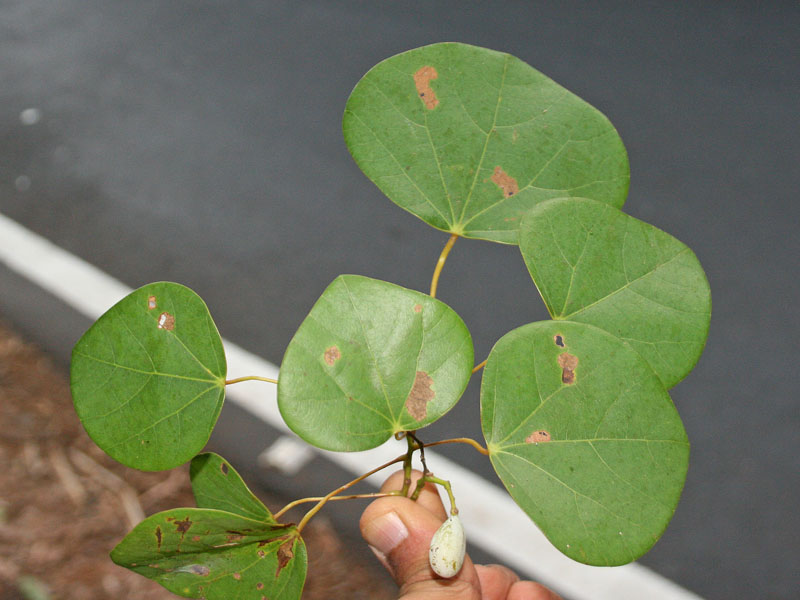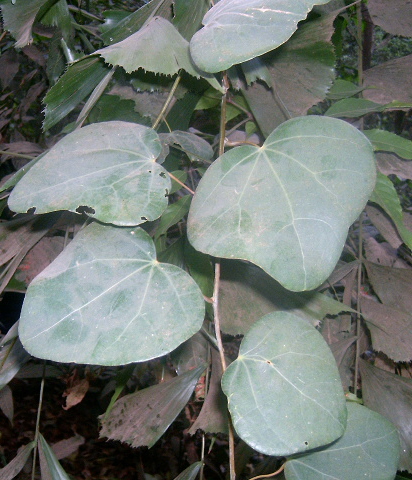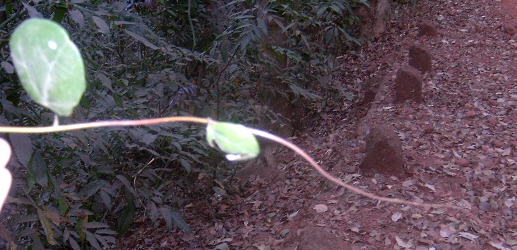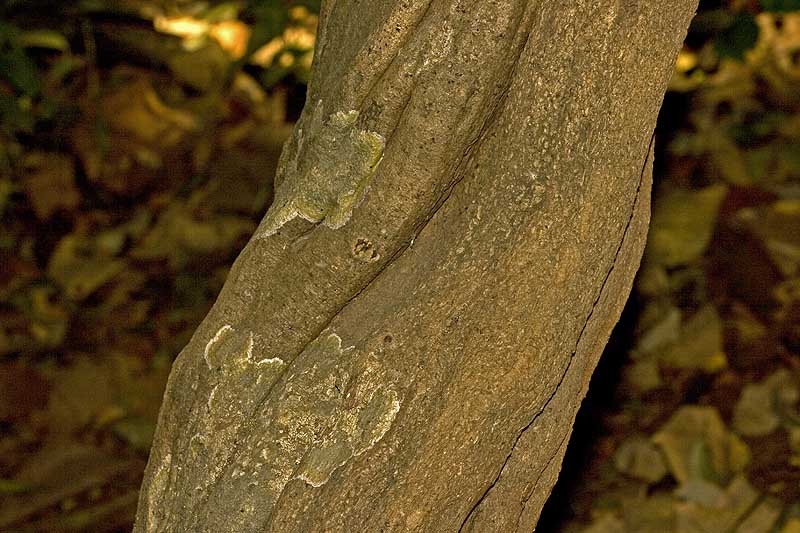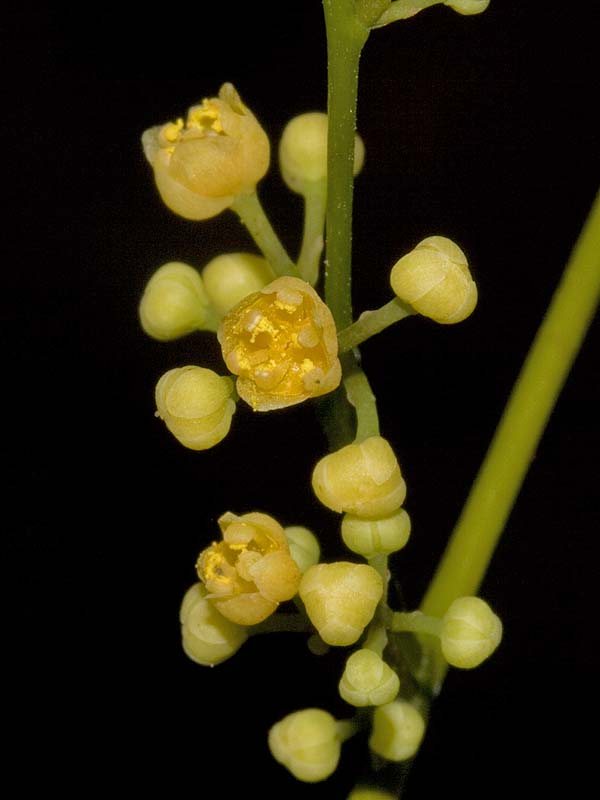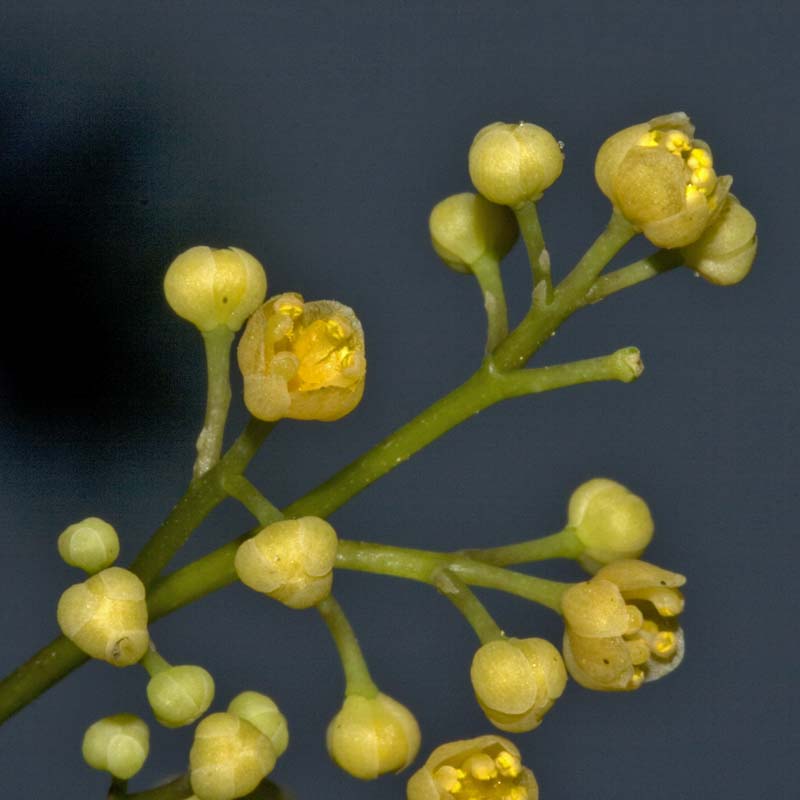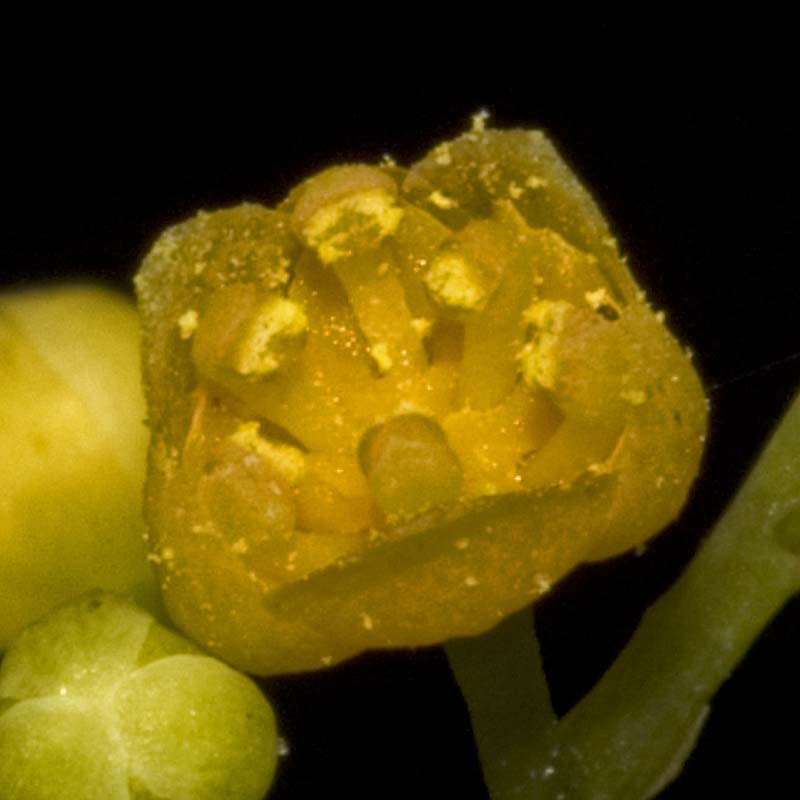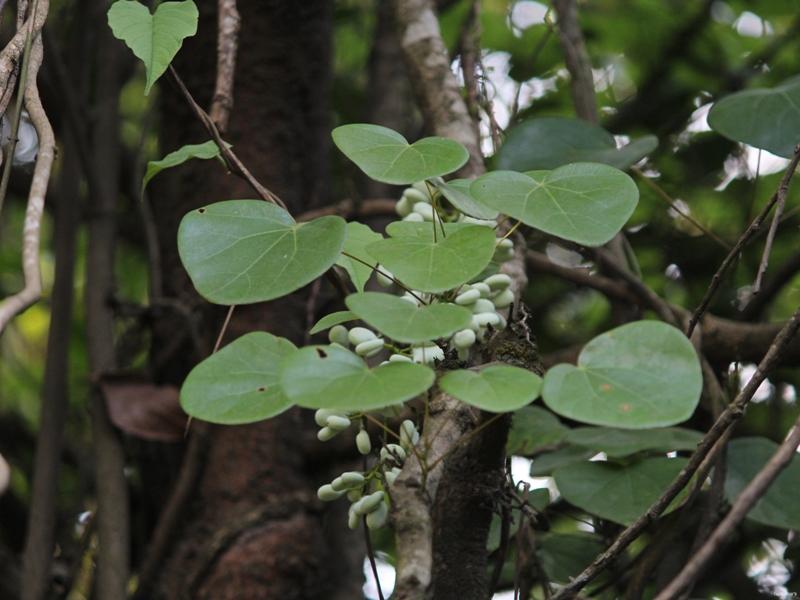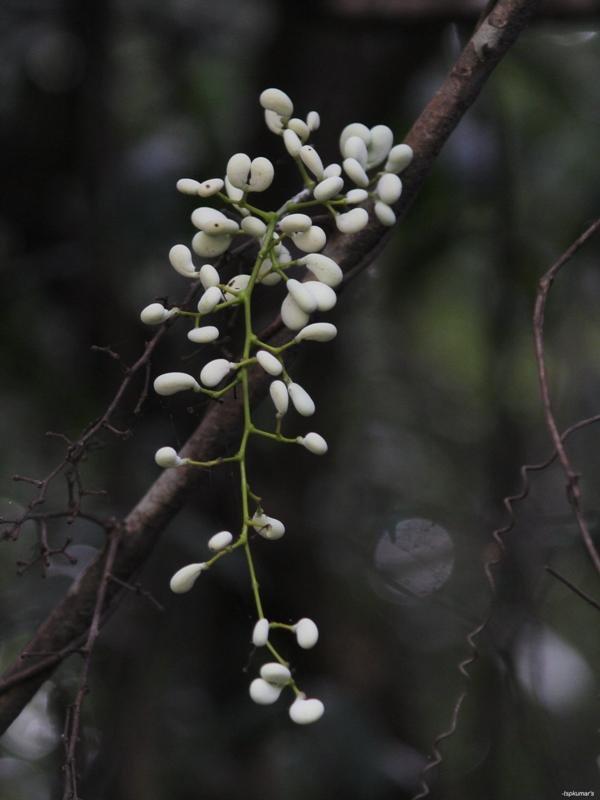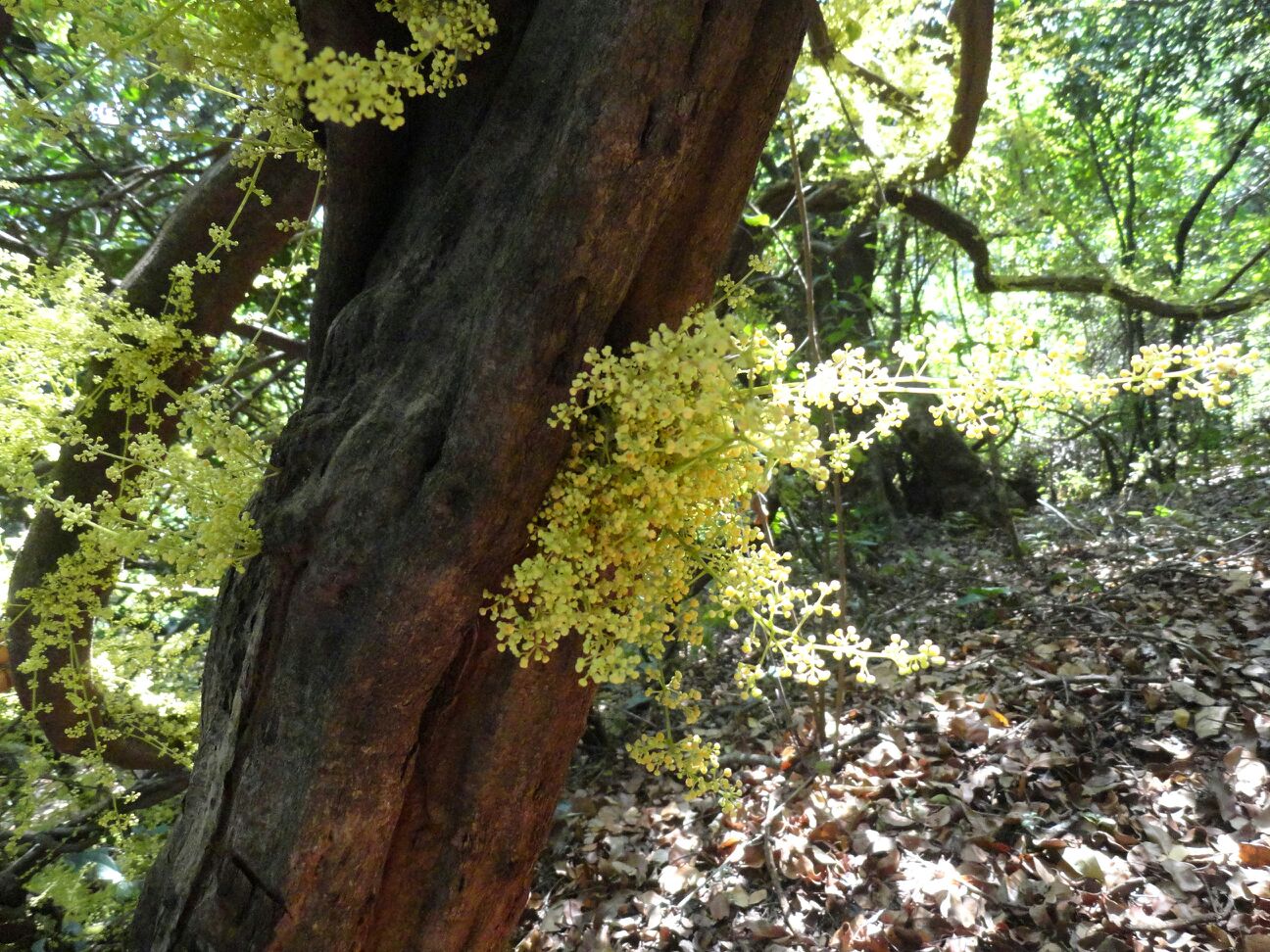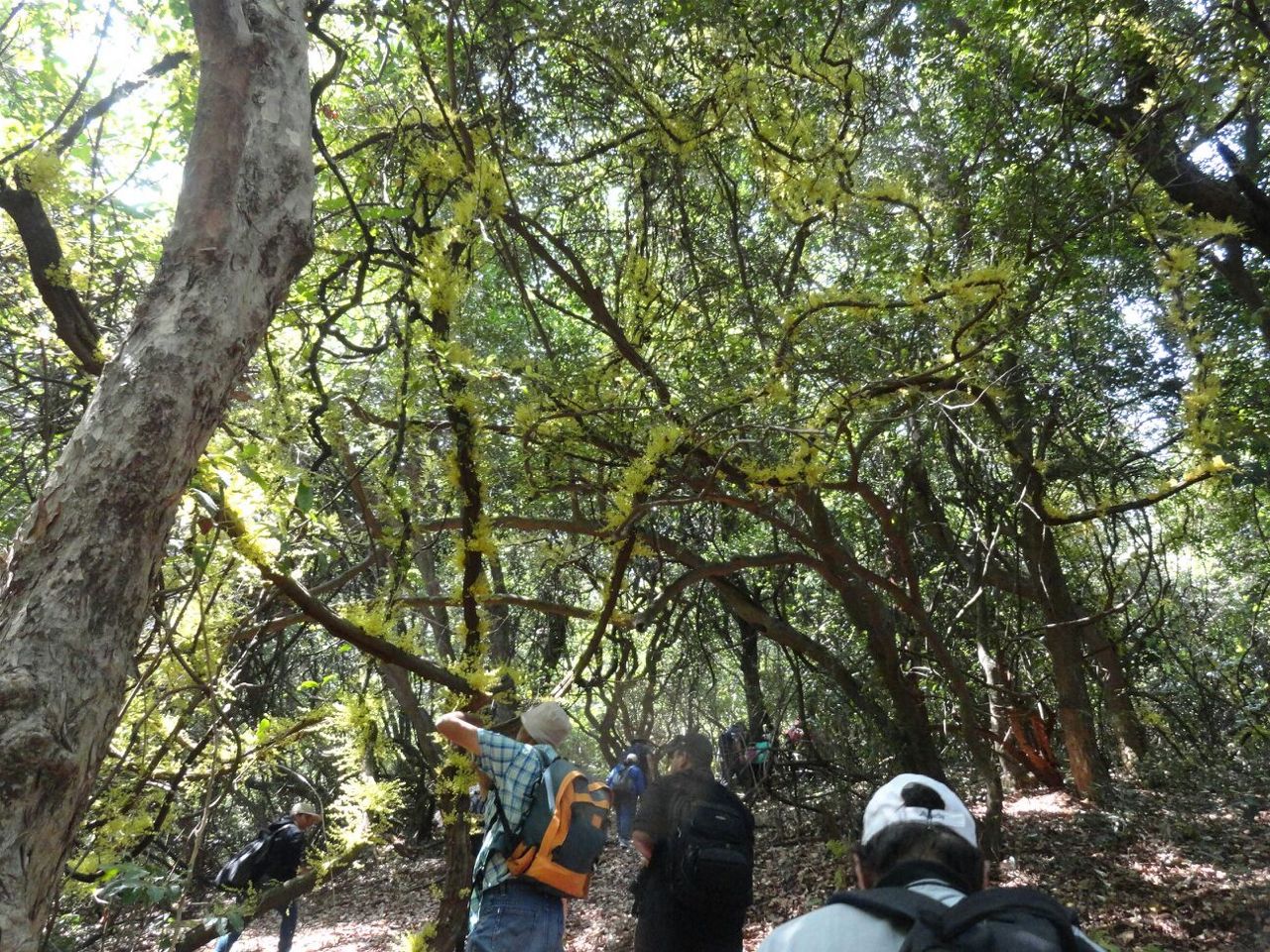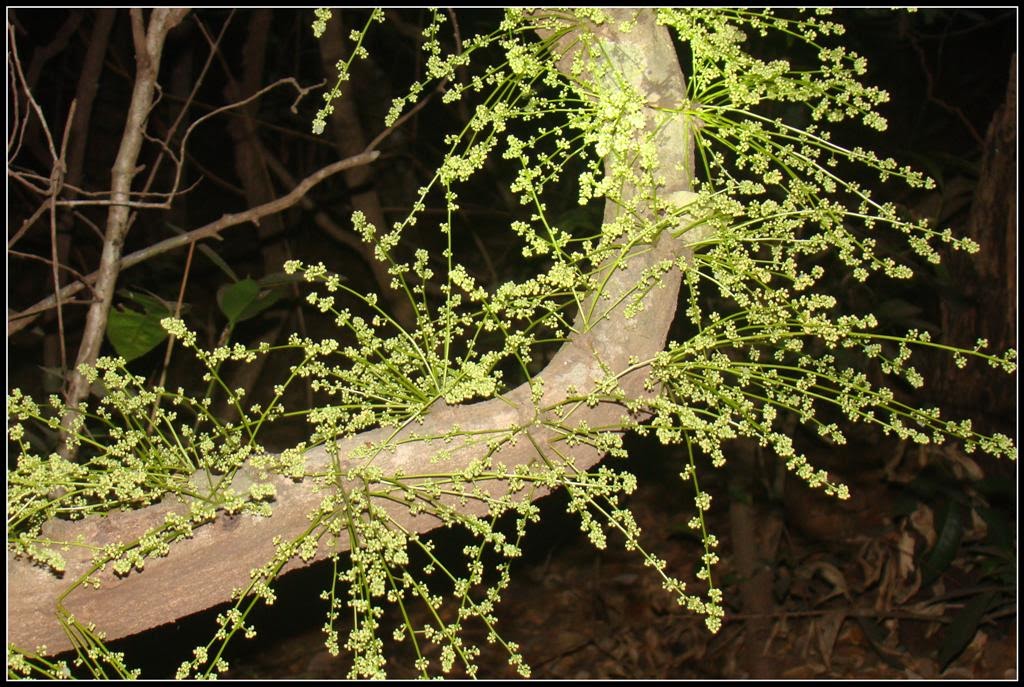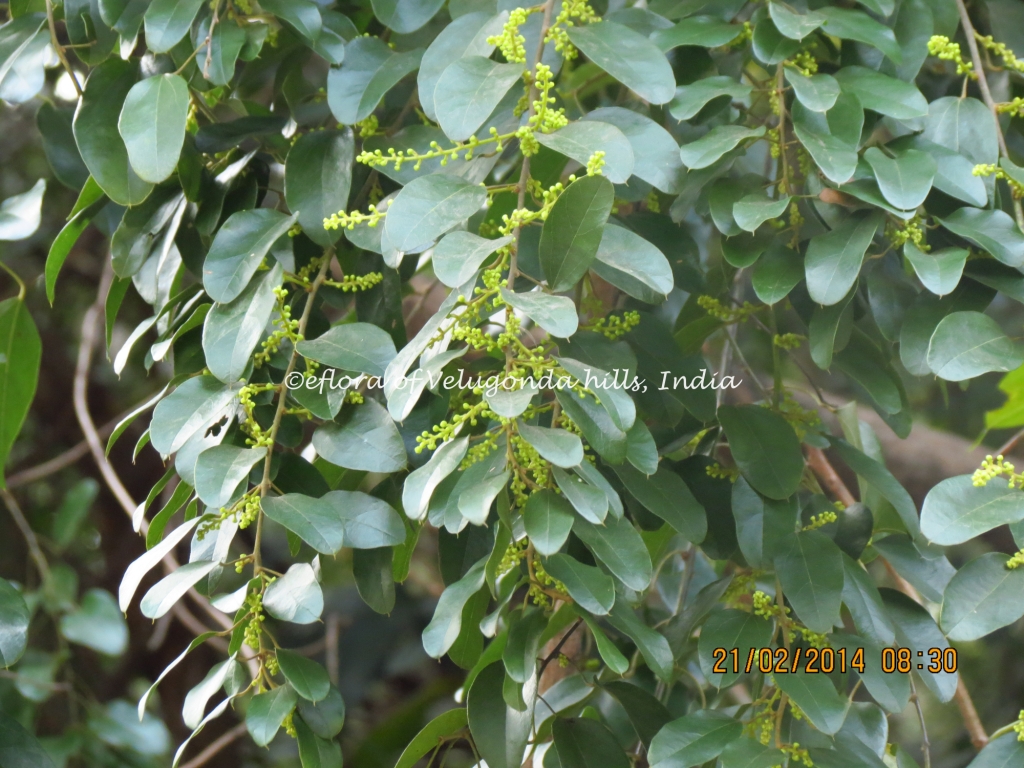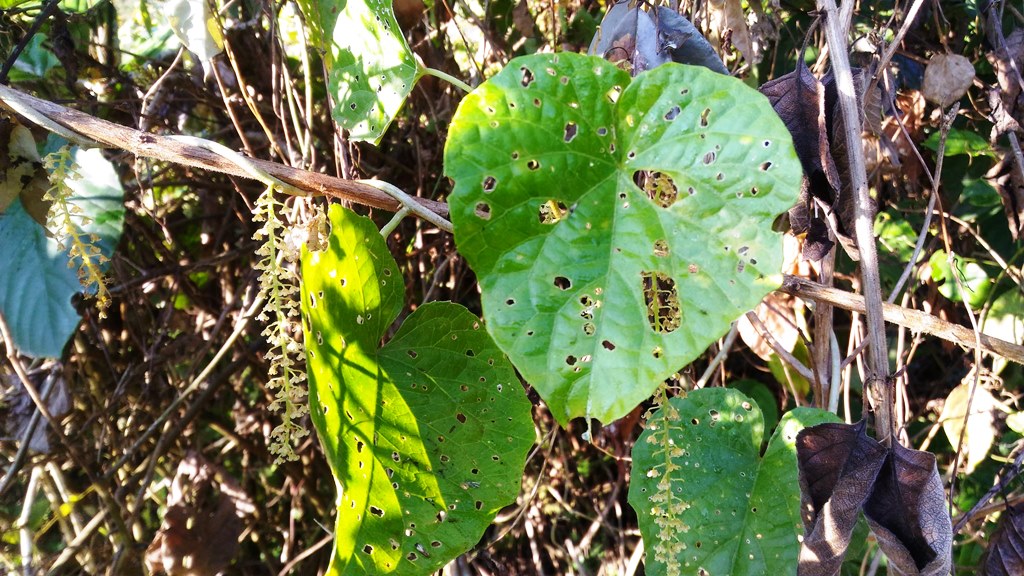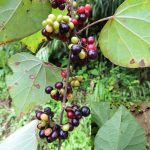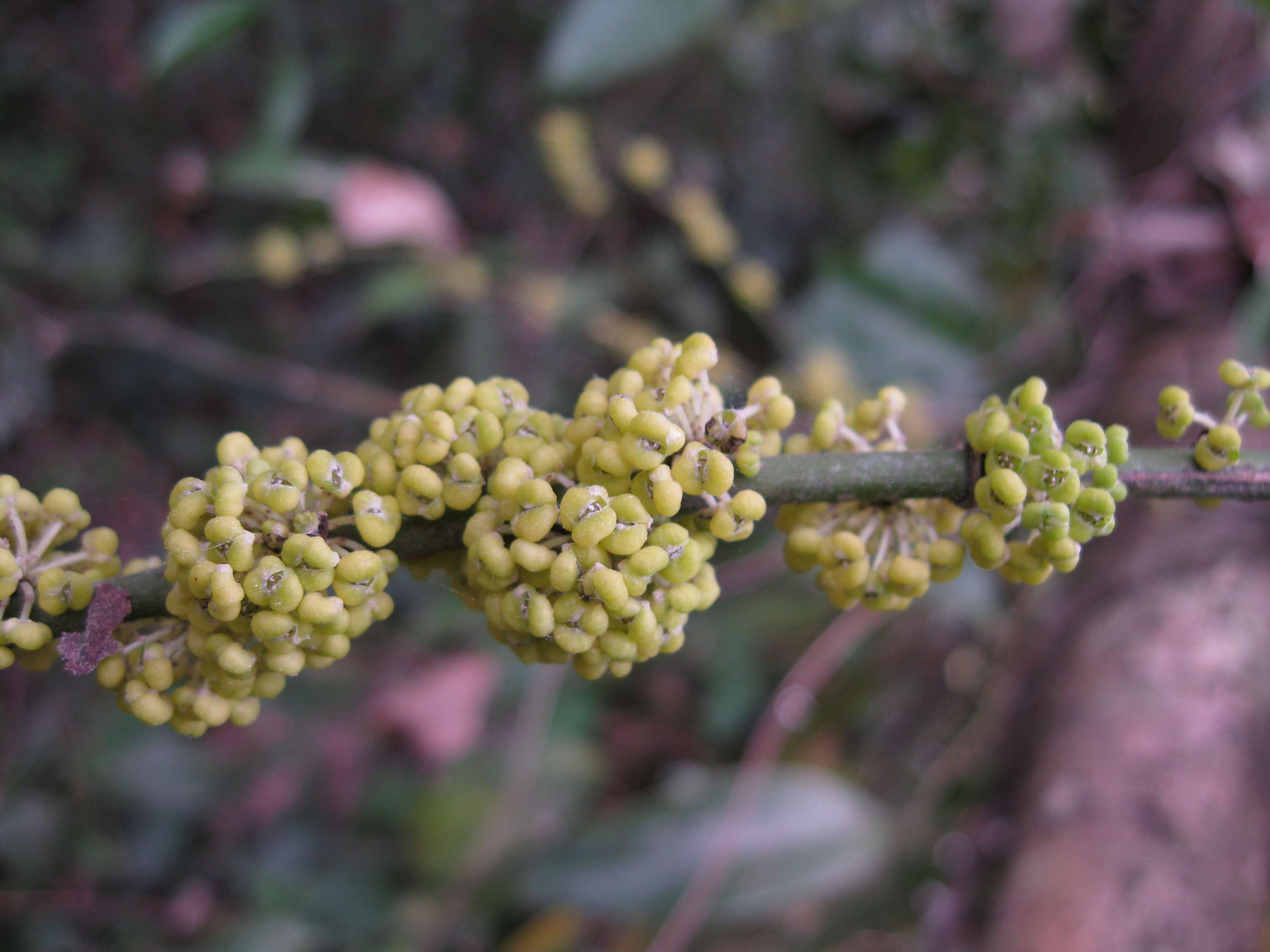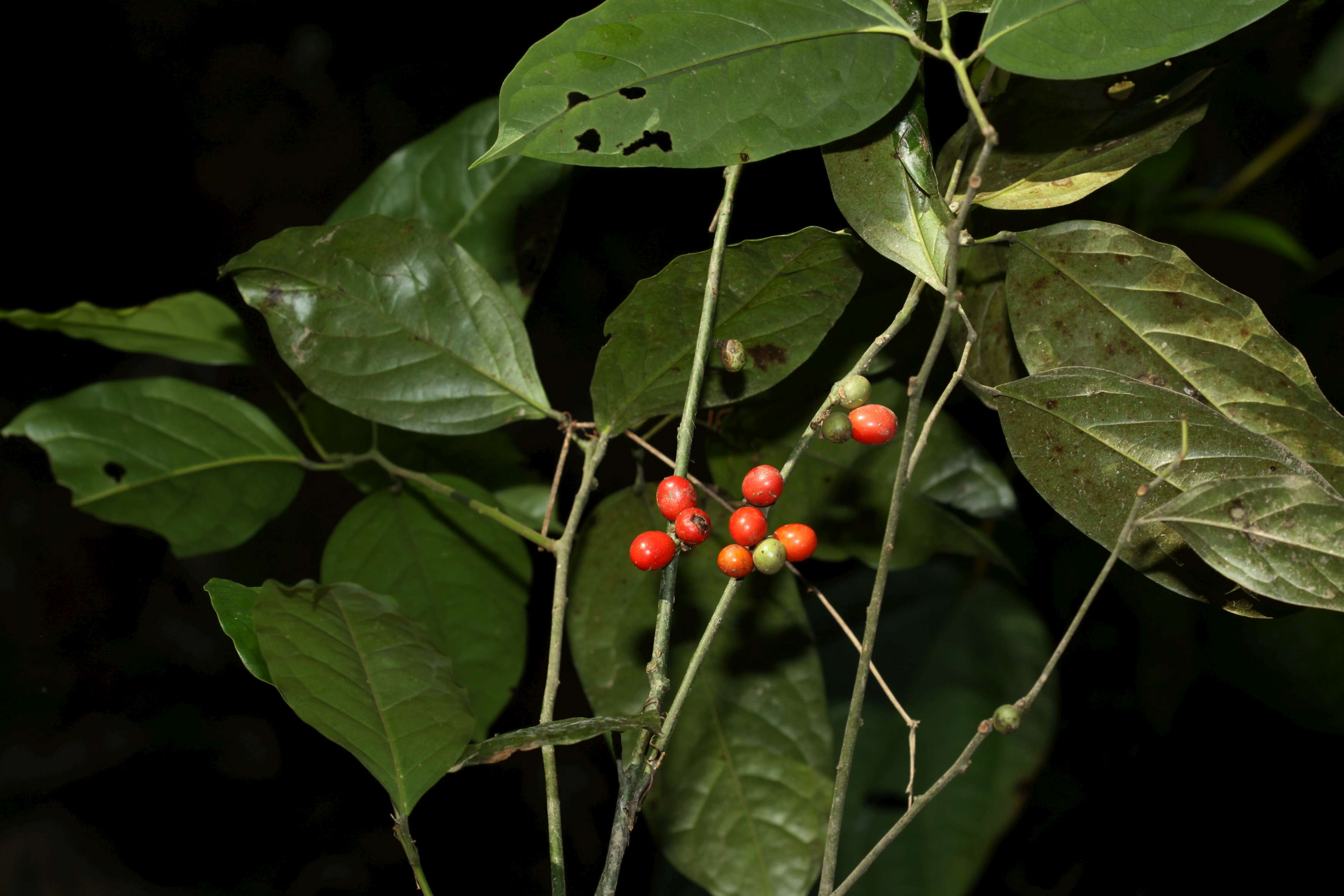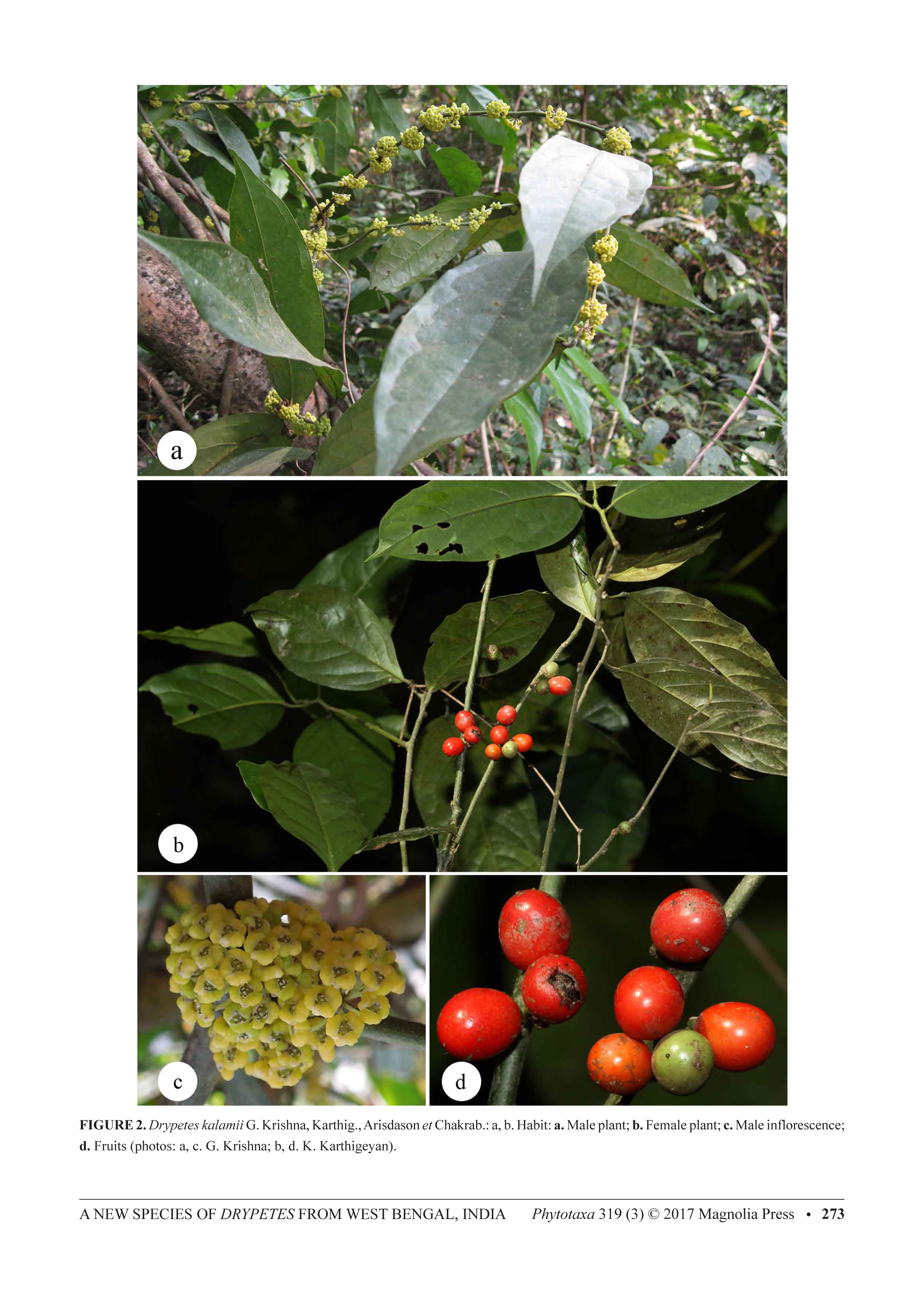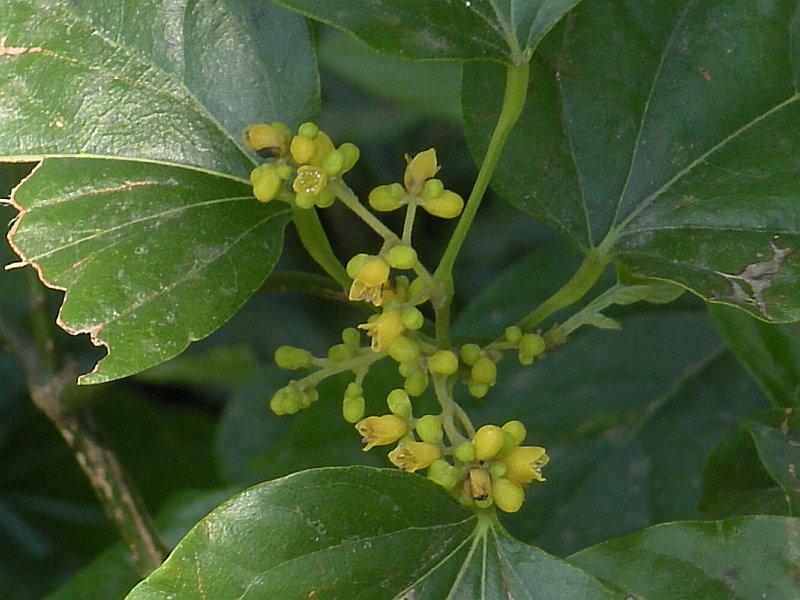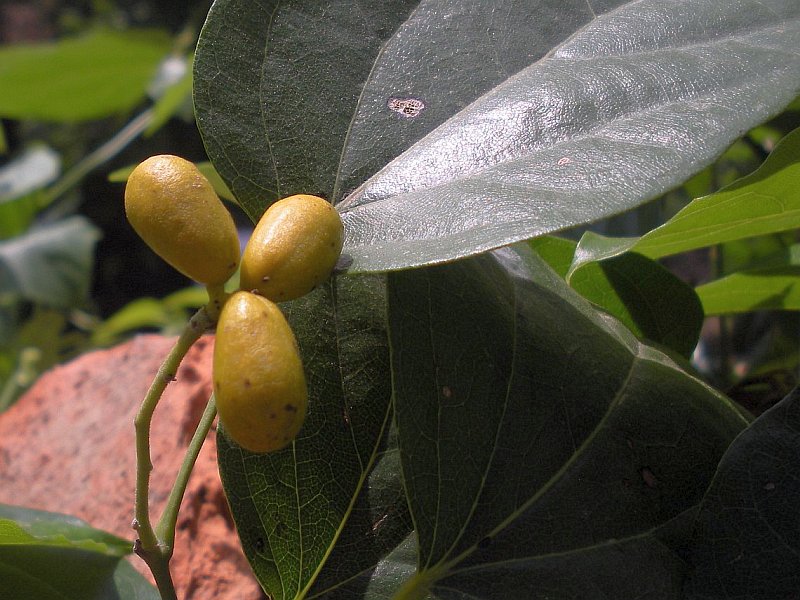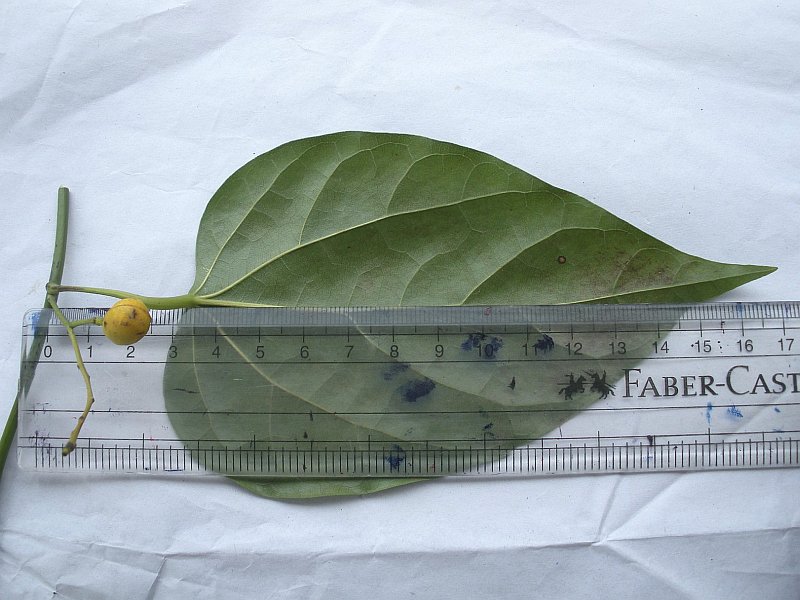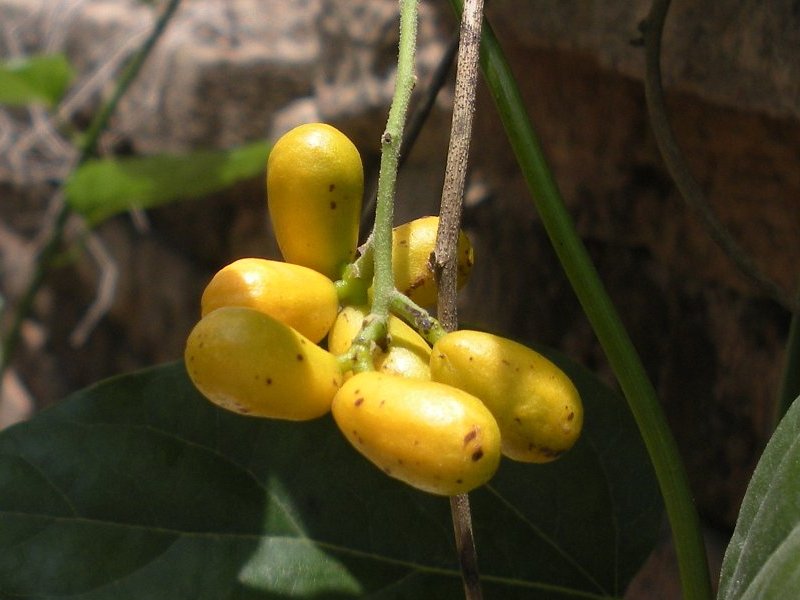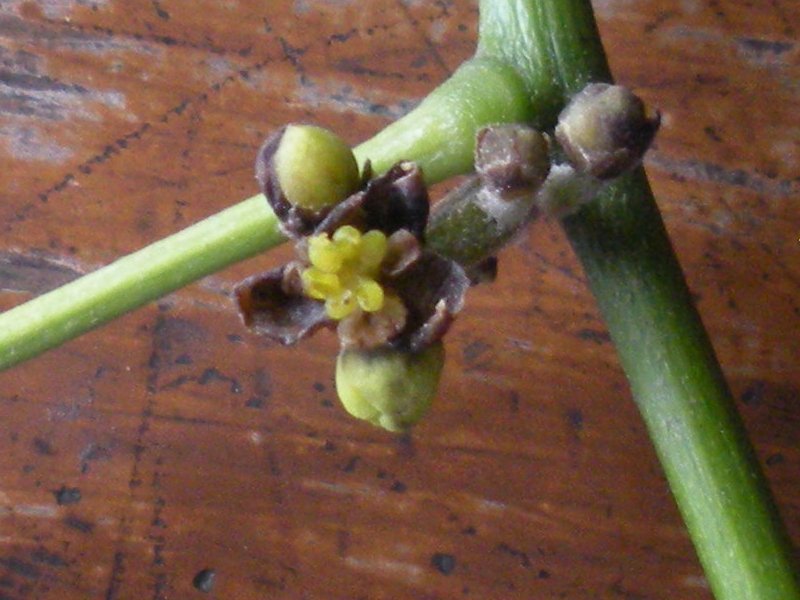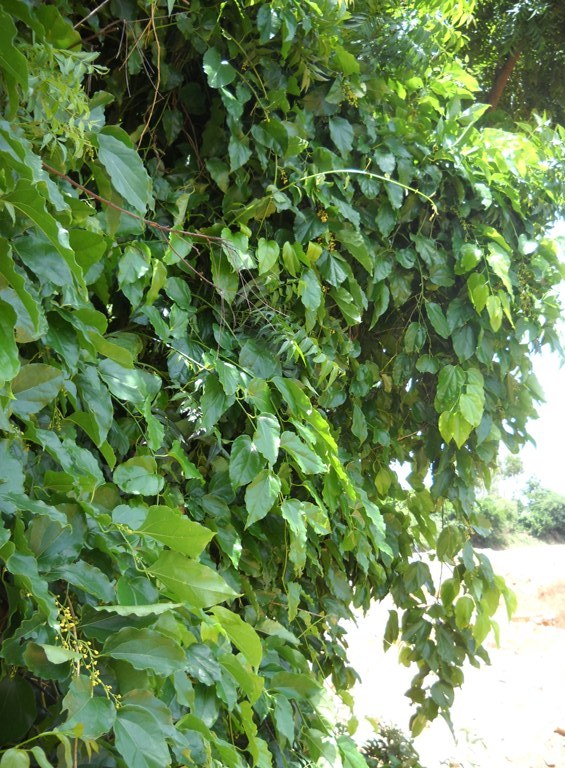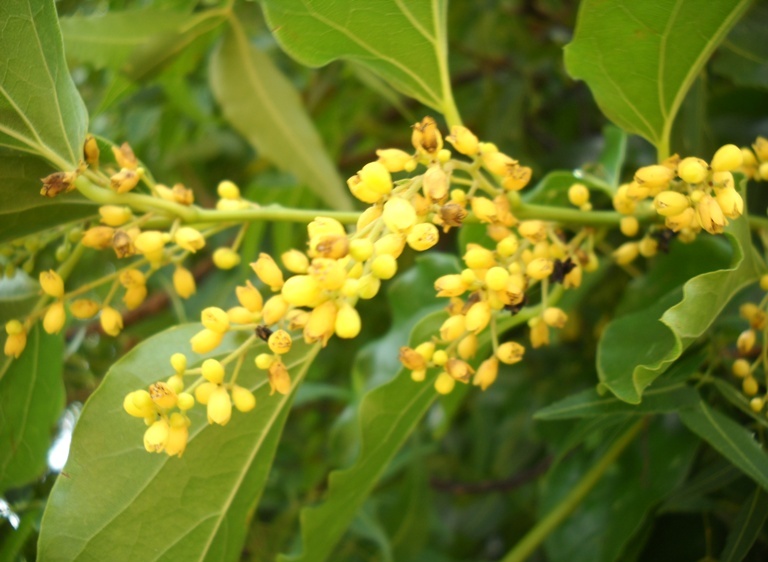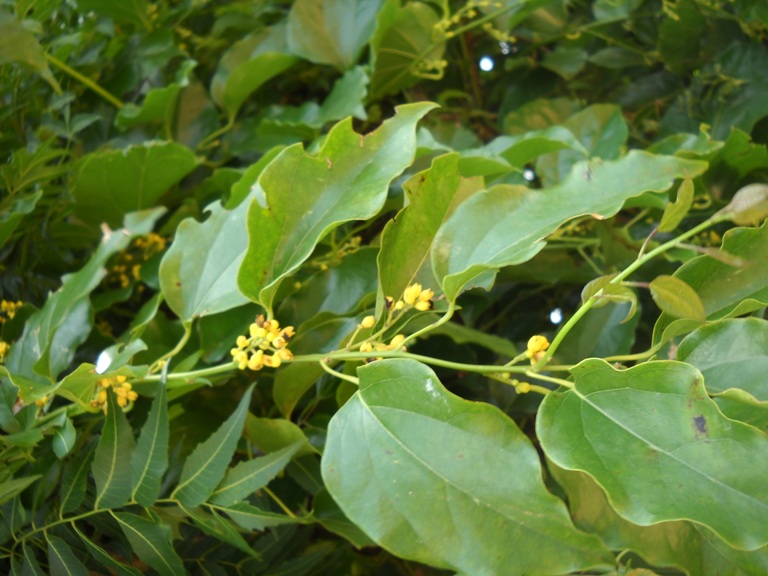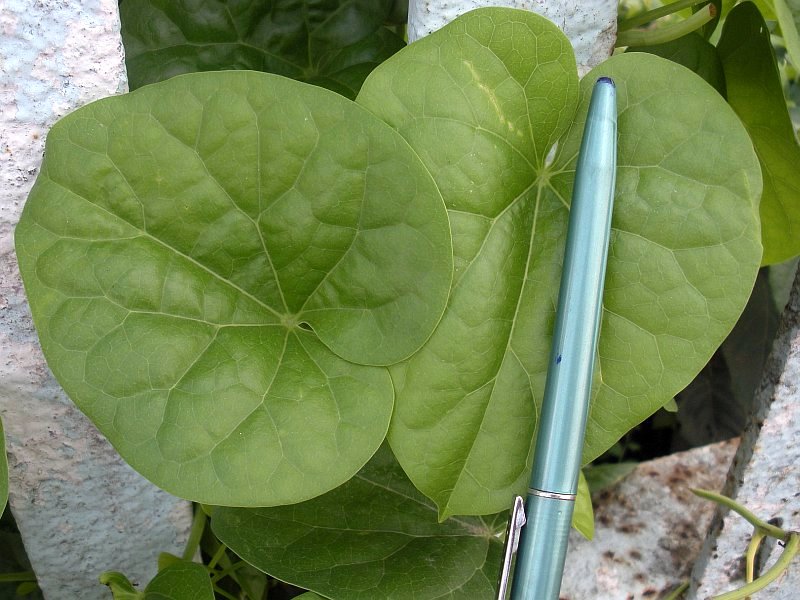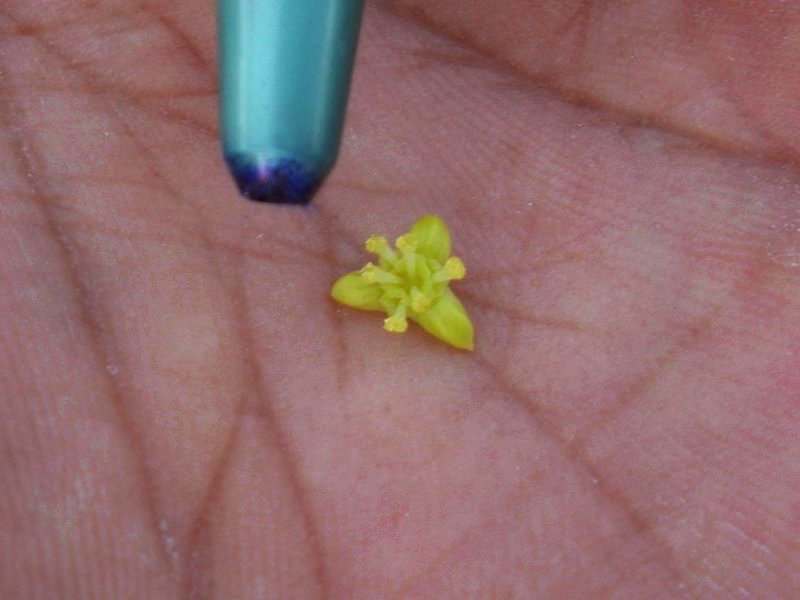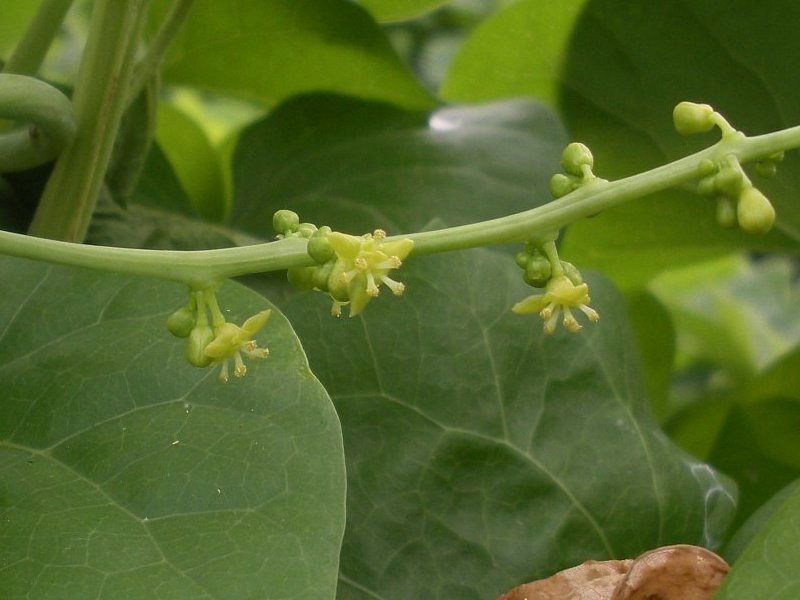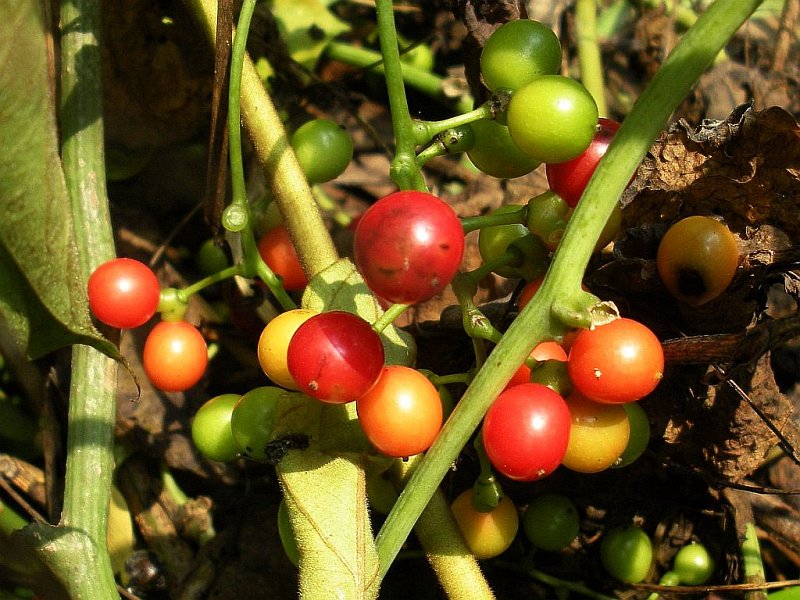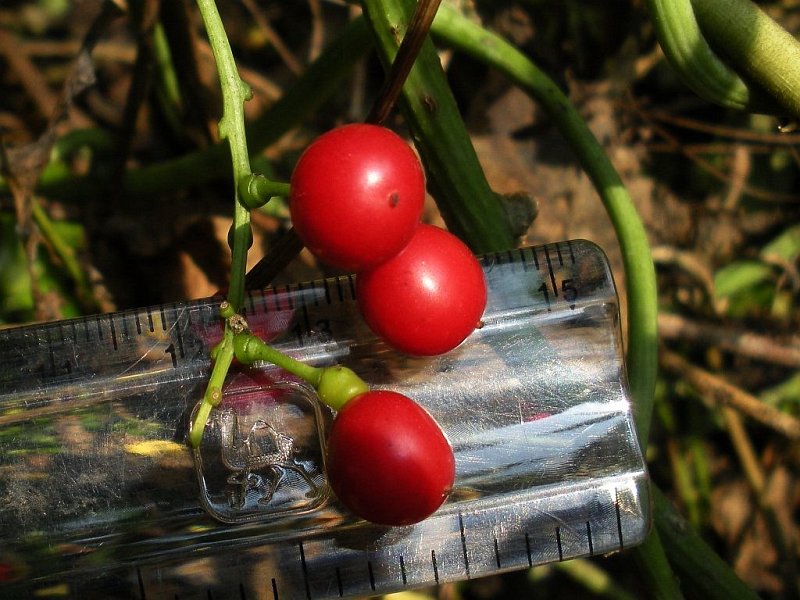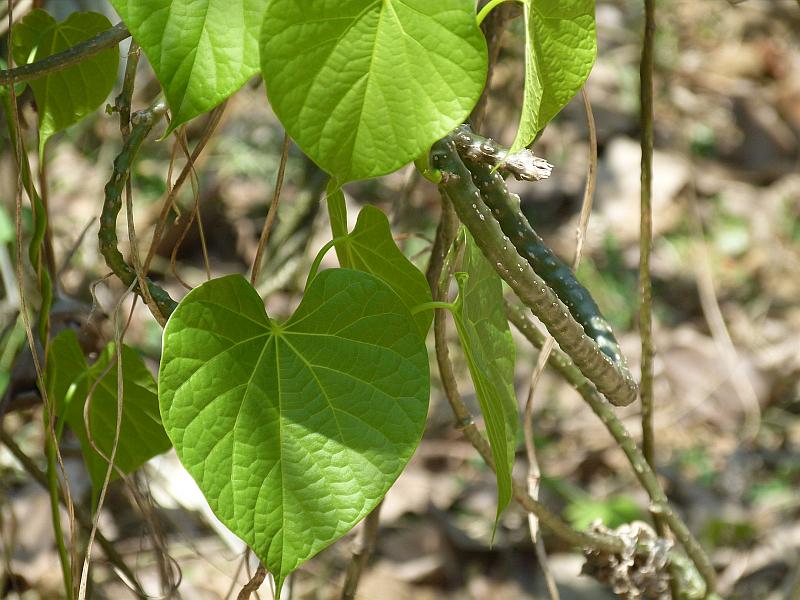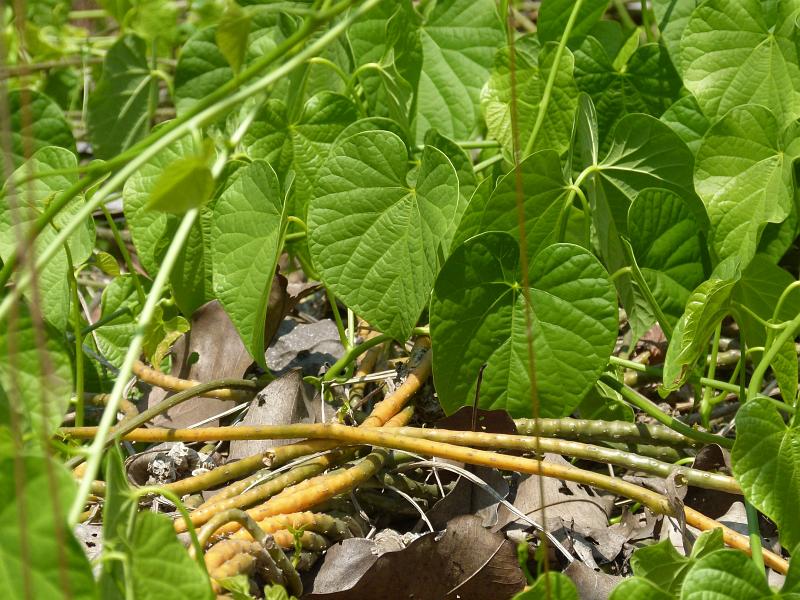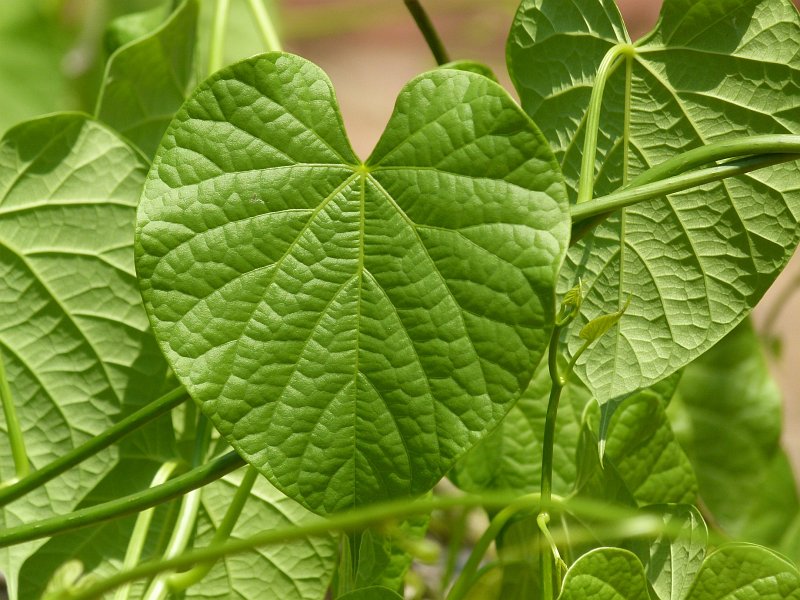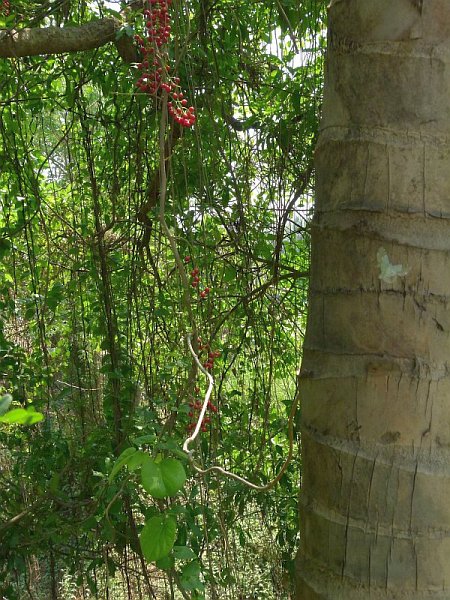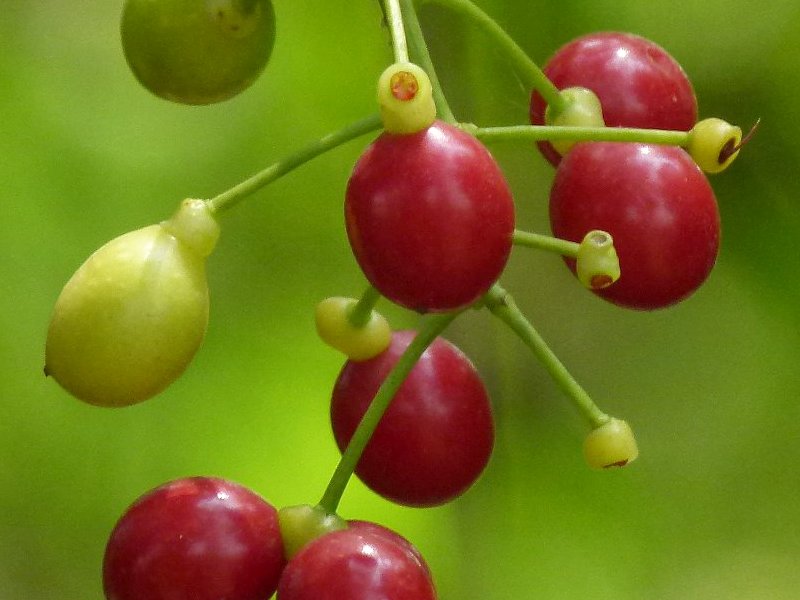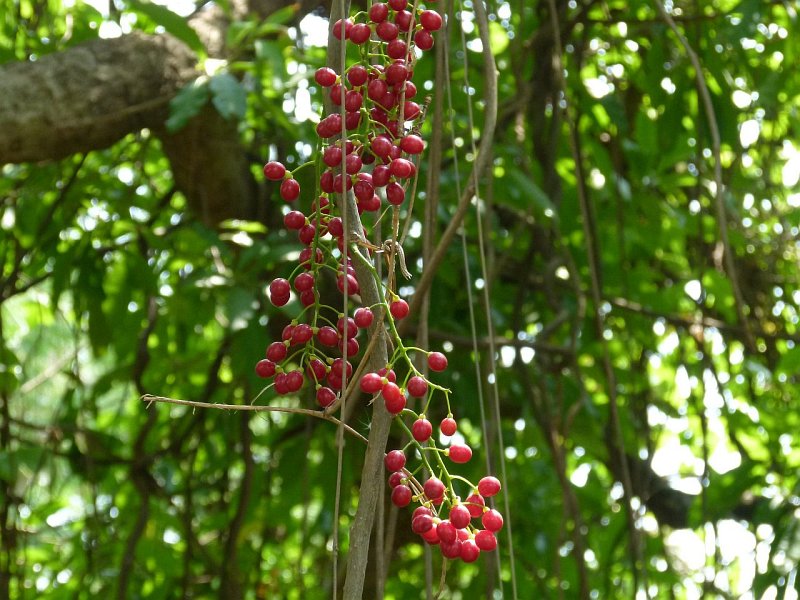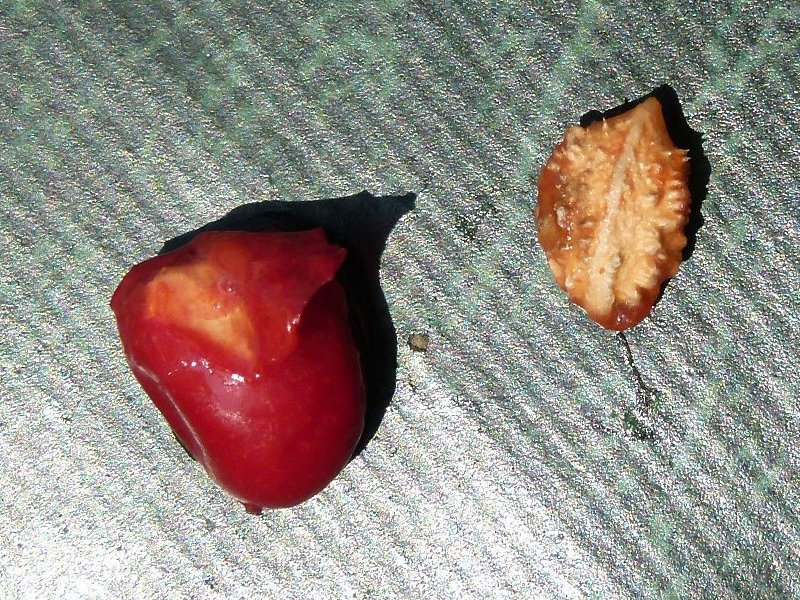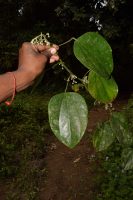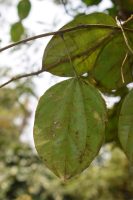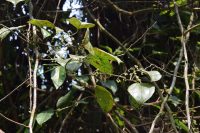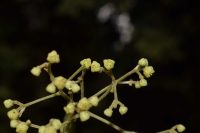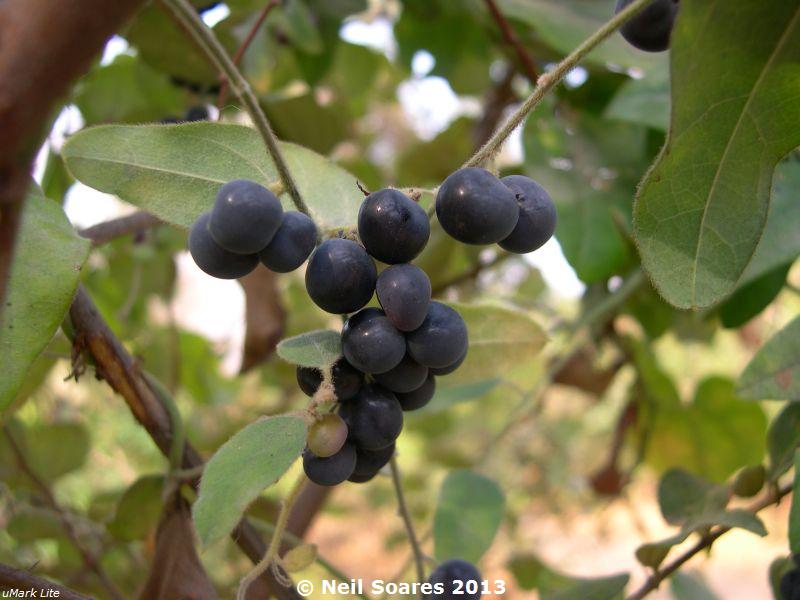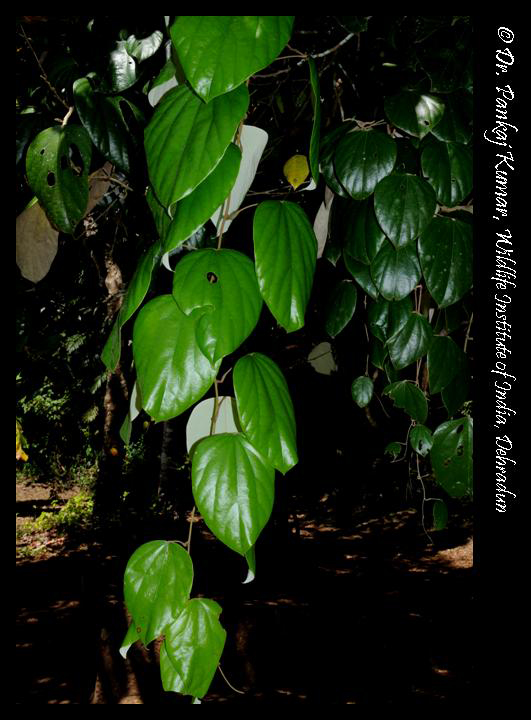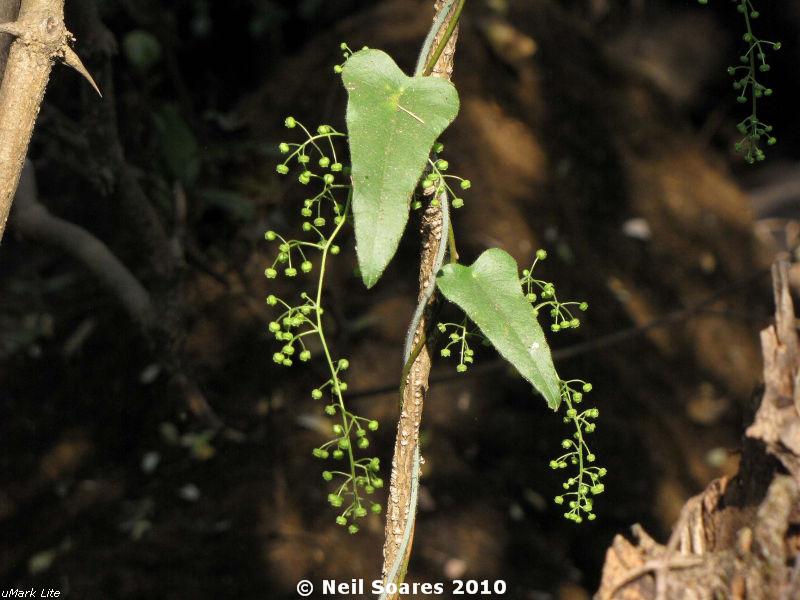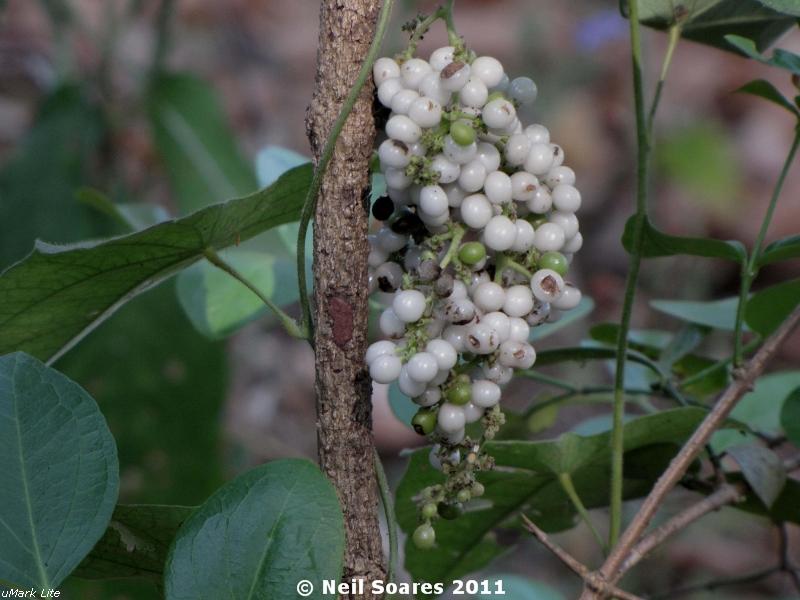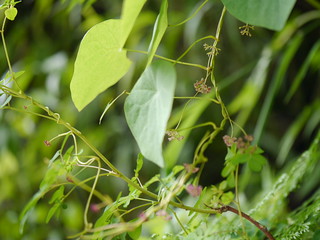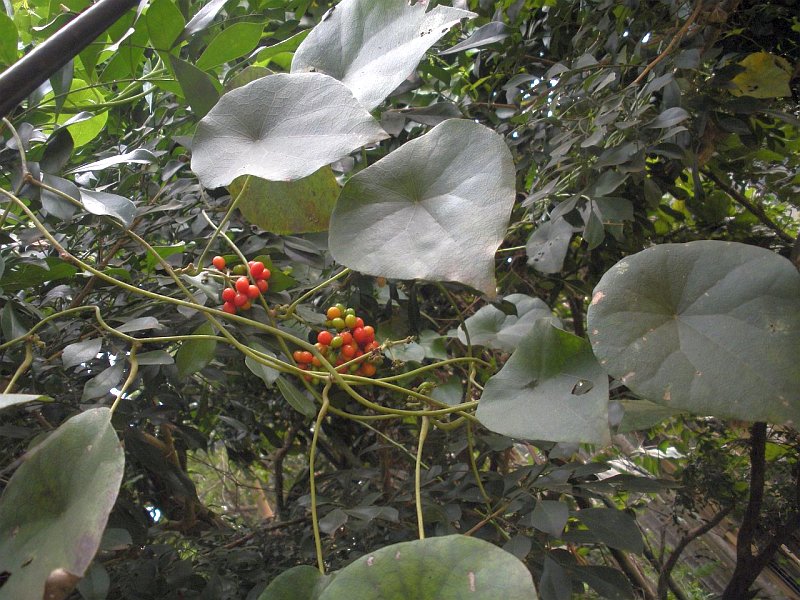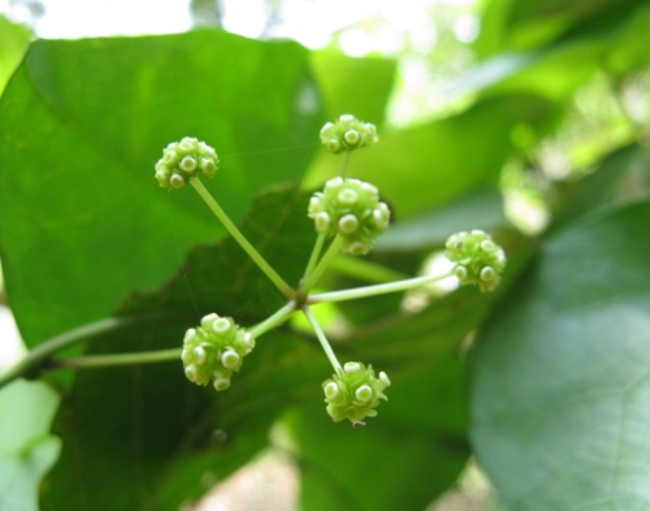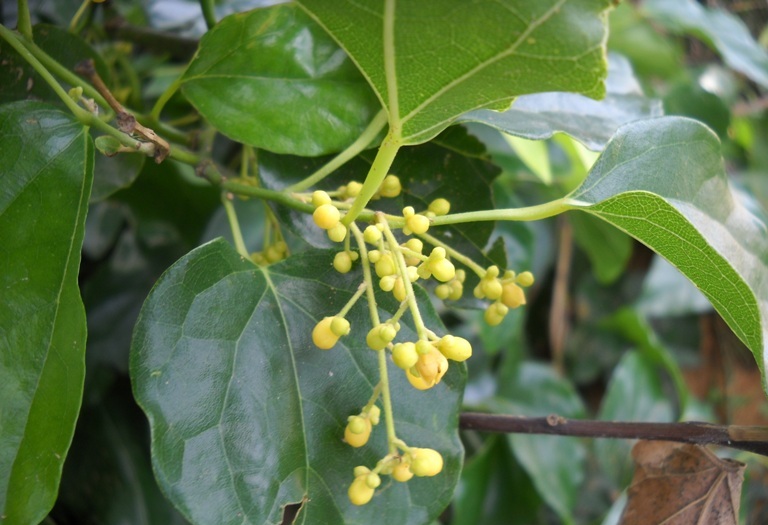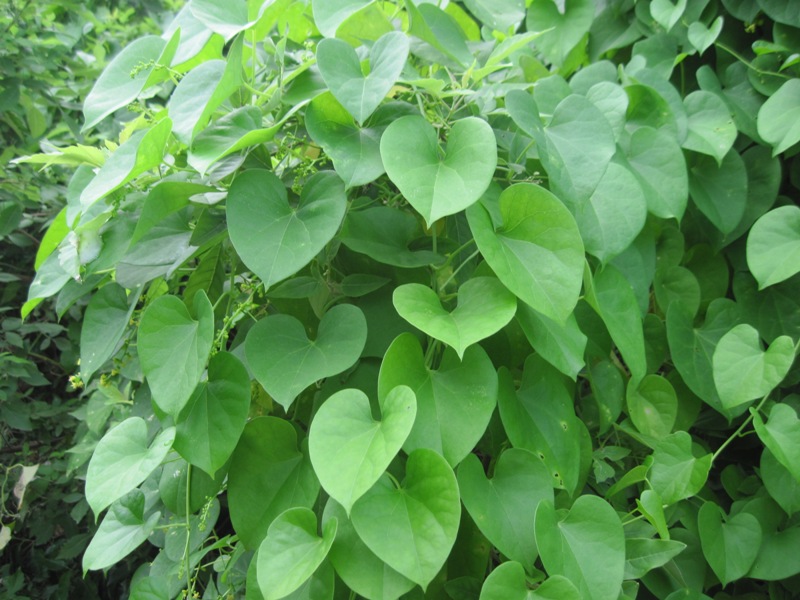|
MENISPERMACEAE: (Reported from India: 20 genera, 44 species; Represented on efi. 14 genera and 22 species, including 1 from outside India as on 7.7.20) (Compiled by Dr. Gurcharan Singh)
1. Albertisia: mecitophylla. 2. Anamirta: cocculus. 3. Aspidocarya: uvifera. 4. Cissampelos: pareira var. hirsuta. 5. Cocculus: hirsutus, laurifolius, orbiculatus, pendulus, prainianus. 6. Coscinium: fenestratum. 7. Cyclea: barbata, bicristata, debiliflora, fissicalyx, meeboldii, peltata, pendulina, wattii. 8. Diploclisia: glaucescens. 9. Eleutharrhena: macrocarpa. 10. Fibraurea: tinctoria. 11. Haematocarpus: validus. 12. Hypserpa: nitida. 13. Menispermum: canadense (USA). 14. Pachygone: ovata. 15. Parabaena: sagittata. 16. Pericampylus: glaucus. 17. Pycnarrhena: lucida, pleniflora. 18. Stephania: andamanica, elegans, glandulifera, gracilenta, japonica, japonica var. discolor, rotunda (syn glabra), venosa, wightii. 19. Tiliacora: acuminata, triandra. 20. Tinomiscium: petiolare. 21. Tinospora: cordiflora, crispa, glabra, sinensis. . Comparative images of this family except genus: Stephania, are given below: .
Hypserpa nitida Miers ex Benth. (SE. India, Sri Lanka, Assam to China (S. Yunnan to S. Fujian) and W. & Central Malesia: Andaman Is., Assam, Bangladesh, Borneo, Cambodia, China South-Central, China Southeast, Hainan, India, Laos, Malaya, Myanmar, Philippines, Sri Lanka, Sulawesi, Sumatera, Thailand as per POWO) .
Photo guide to selected taxa of Menispermaceae (Click on the botanical name to see the original message/s posted on efloraofindia forum)
References . Photo guide to Menispermaceae : 20 posts by 8 authors.
I have now incorporated the draft photo guide in the eFI website. Please check /species/m—z/m/menispermaceae?pli=1
As … pointed out, the pictures are of different sizes causing the non uniformity in the layout. I am also not sure how to update this, maintaining the a-z arrangement, when we have additional taxa in the database. I am however sure that this idea will evolve with inputs from you all before reaching an user-friendly eFlora of India. Yes I am also able to see these thumbnails. Though due to slow speed of our broad band these loads slowly. …, is there a way to see whether or not the page size has increased after adding the thumbnails? If increased, how much? On right clicking on the page & clicking on properties, I find size of this page as 137913 bytes (i.e. 137 KB). Thanks … for the quick response. I guess the size difference is not too much! It works fine with me both in Windows 7 and Windows 8, I prefer Chrome being lighter and faster. Menispermaceae/ Berberidaceae/ Nymphaeaceae/ Nelumbonaceae Fortnight :: MENISPERMACEAE :: RVS-Oct 01: 1 post by 1 author.
I had compiled the general features of Menispermaceae but couldn’t post it at the beginning of this episode. Thanks to … for taking care of this. Here are some additional details:
General features of Menispermaceae (moonseed family)
The family Menispermaceae comprises 73 genera and about 320 species, distributed in all of the tropical and subtropical regions of Americas, Asia and Africa. Different publications quote different number of species ranging from 300 to 520. In India, the family is represented by 20 genera and 43 species. List of genera present in India: 1. Albertisia 2. Anamirta 3. Apsidocarya 4. Cissampelos 5. Cocculus 6. Coscinium 7. Cyclea 8. Diploclisia 9. Eleutharrhena 10. Fibraurea 11. Haematocarpus 12. Hypserpa 13. Pachygone 14. Parabaena 15. Pericampylus 16. Pycnarrhena 17. Stephania 18. Tiliacora 19. Tinomiscium 20. Tinospora List of genera so far discussed in eFI: 1. Anamirta 2. Cissampelos 3. Cocculus 4. Coscinium 5. Cyclea 6. Diploclisia 7. Pachygone 8. Parabaena 9. Stephania 10. Tiliacora 11. Tinospora .
Menispermaceae/ Berberidaceae/ Nymphaeaceae/ Nelumbonaceae Fortnight :: MENISPERMACEAE :: # RVS-Oct 02 : 2 posts by 2 authors. General description of Menispermaceae (moonseed family)
Habit: Usually climbers, twiners or scandent shrubs.
Leaves: Simple, alternate, entire or lobed, palmi-nerved, exstipulate. Leaves are typically more or less subpeltate, with the insertion of the petiole being scarcely in from the margin of the lamina, but a few taxa are strongly peltate. The petiole is pulvinate at both ends.
Flowers: Small, solitary or in fascicles/cymes/racemes, dioecious; sepals usually 6, free, in 2-4 series; petals 6 (rarely absent), free or connate. Male flowers: stamens usually one opposite each petal; anthers 2-celled. Female flowers: staminodes 6 or 0; ovaries usually 3 (rarely 1 or 6-12); style terminal, simple or divided; ovules usually solitary.
Fruits: Drupes, with the style-scar subterminal or subbasal.
Seeds: Usually hooked or reniform, often curved round an intrusion of the endocarp.
Key features:Members of the family Menispermaceae show extensive variation in most of their morphological traits. However, the main feature historically used to define the family is the curved seed found in many of the genera, hence the common name “moonseed”family. Concomitant with the curving of the seed is the curving of the embryo. Additionally, the endocarp is variously ornamented and provides important taxonomic characters for distinguishing between and within genera.
Properties: Several members of the family are known for their medicinal and toxic properties. Most species contain alkaloids which have similar effects to the paralysing hunting poisons curare, and berberine. These alkaloids also have medicinal value. Plants from the genera Stephania andTinospora feature in Ayurvedic and Chinese medicine.
References:
1. Hooker, J. D. (1885) Flora of British India. Vol. 1. Reprint by Bishen Singh Mahendra Pal Singh, Dehra Dun.
2. Pramanik, A. & Gangopadhyay, M. (1993) Menispermaceae. In: Sharma, B.D. et al. (eds) Flora of India, Botanical Survey of India. Vol. 1. Deep Printers, New Delhi.
3. http://delta-intkey.com/angio/www/menisper.htm . Menispermaceae, Berberidaceae, Nymphaeaceae & Nelumbonaceae Fortnight 11-24Oct.2014: Menispermaceae-General Information_DSR_05 : 4 posts by 4 authors.
Menispermaceae members are distinguished by the dioecious character, lianous habit (not so in some Cocculus spp.), the usually three merous floral situation, the double whorl of sepals, and the curved seed. Detailed description Named by A.L.de Jussieu the family Menispermaceae is mainly restricted to Tropics and subtropics. Few species reach to temperate regions also. Menispermaceae is represented by 68 genera and 448 species in the world (TPL 2013). In India it represented by 20 genera and 43 species (Pramanik & Gangopadhyay, 1993). Following genera and their species are present and discussed in eFI (pl click genus name to see details): Anamirta (A.cocculus) Cissampelos (C.pareira) Cocculus (C.hirsutus, C.laurifolius, C.pendulus) Coscinium (C.fenestratum) Cyclea (C.peltata) Diploclisia (D.glaucescens) Pachygone(P.ovata) Parabaena (P.sagittata) Stephania (S.glabra, S.gracilenta, S.japonica, S.japonica var. discolour) Tiliacora (T.acuminata) Tinospora (T.cordifolia, T.sinensis) Threatened species as mentioned in Red list of Threatened Vascular Plant Species in India (based on the 1997 IUCN Red List of Threatened Plants): Albertisia mecistophylla (Indeterminate) Coscinium fenestratum (Endangered) Cyclea debiliflora (Indeterminate) Cyclea fissicalyx (Endangered) Cyclea wattii (Indeterminate) Stephania andamanica (Indeterminate) Tinospora andamanica (Indeterminate) Following species need to be added in eFI to cover complete Indian Menispermaceae: Albertisia mecintophylla Aspidocarya uvifera Cocculus orbiculatus, C.prainianus Cyclea barbata, C.bicristata, C.debiliflora, C.fissicalyx, C.meeboldii, C.pendulina, C.wattii Eleutharrhena macrocarpa Fibraurea tinctoria Haematocarpus validus Hypserpa nitida Pericampylus glaucus Pycnarrhena lucida, P.pleniflora Stephania andamanica, S.elegans, S.glandulifera, S.venosa, S.wightii Tiliacora triandra Tinomiscium petiolare Tinospora crispa, T.glabra Thanks for detailed information … really very useful, hope to see some new additions along with usual uploads.. Thanks … for this set of information. I also hope to see some additions during this episode.
We might also need to revisit some of the previous posts (of Menispermaceae) and update the database accordingly. For example the only post of “Pachygone ovata” has been later identified as Tiliacora acumina. So, as of now P. ovata doesn’t exist in the database. I think members can also post pictures of herbarium specimens in the absence of plant pictures. This will help cover some of the rare/threatened species. .
MBNN Fortnight :: MENISPERMACEAE :: # RVS-Oct 03 : 11 posts by 7 authors.
I have compiled some of the common/popular species of Menispermaceae discussed in our group, for your easy reference. Awsome and humbling that so many folks have already shown them to us. Thank you … for these two very good pages of Photoguide to Menispermaceae. Really helpful to differentiate genera. …, having such photoguide for all the families and genera is my wish as well. This way we don’t have to attach or store pictures on pages, so there won’t be any storage/ size issues. I think it is not a straight-forward effort. The challenge is posed by differing sizes of the images attached. To make them appear uniformly tall or wide is very difficult and cumbersome. The pictures in such tables must be thumbnails of original sized images to make page light-weight – easier for the audience to download.
I could be pessimistic; please wait for more comments. Thanks, …, One can start a new google site in such manner & see how it goes. Thanks … for the opinion and concerns, and … for the suggestion.
…, these pages were actually created using Google Sites. . Thank you … for these pictures. All these are very helpful in understanding the morphology of different genera in Menispermaceae. This experiment will go a long way. Very good effort. Looks elegant. .
|
Menispermaceae
Updated on June 18, 2025







